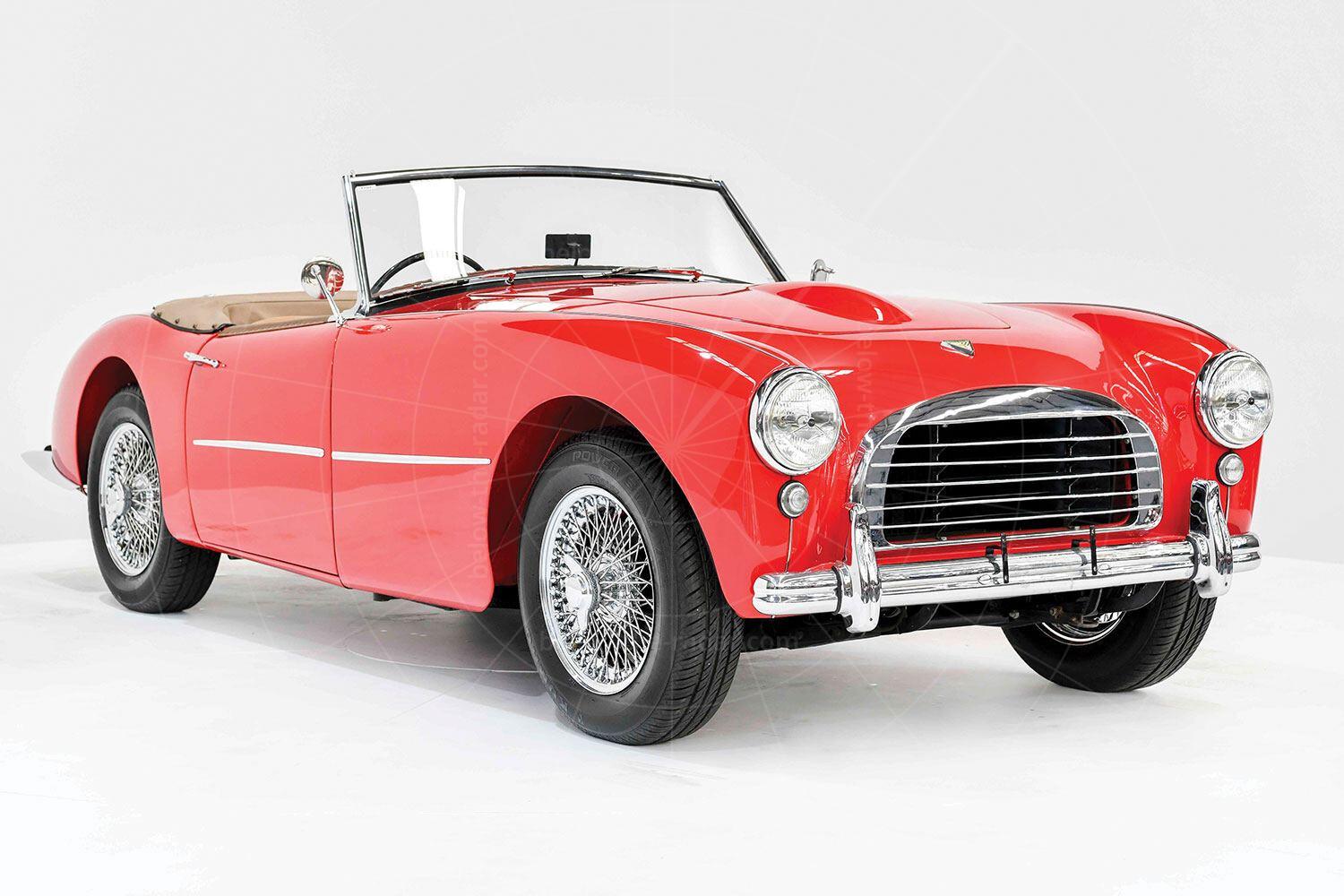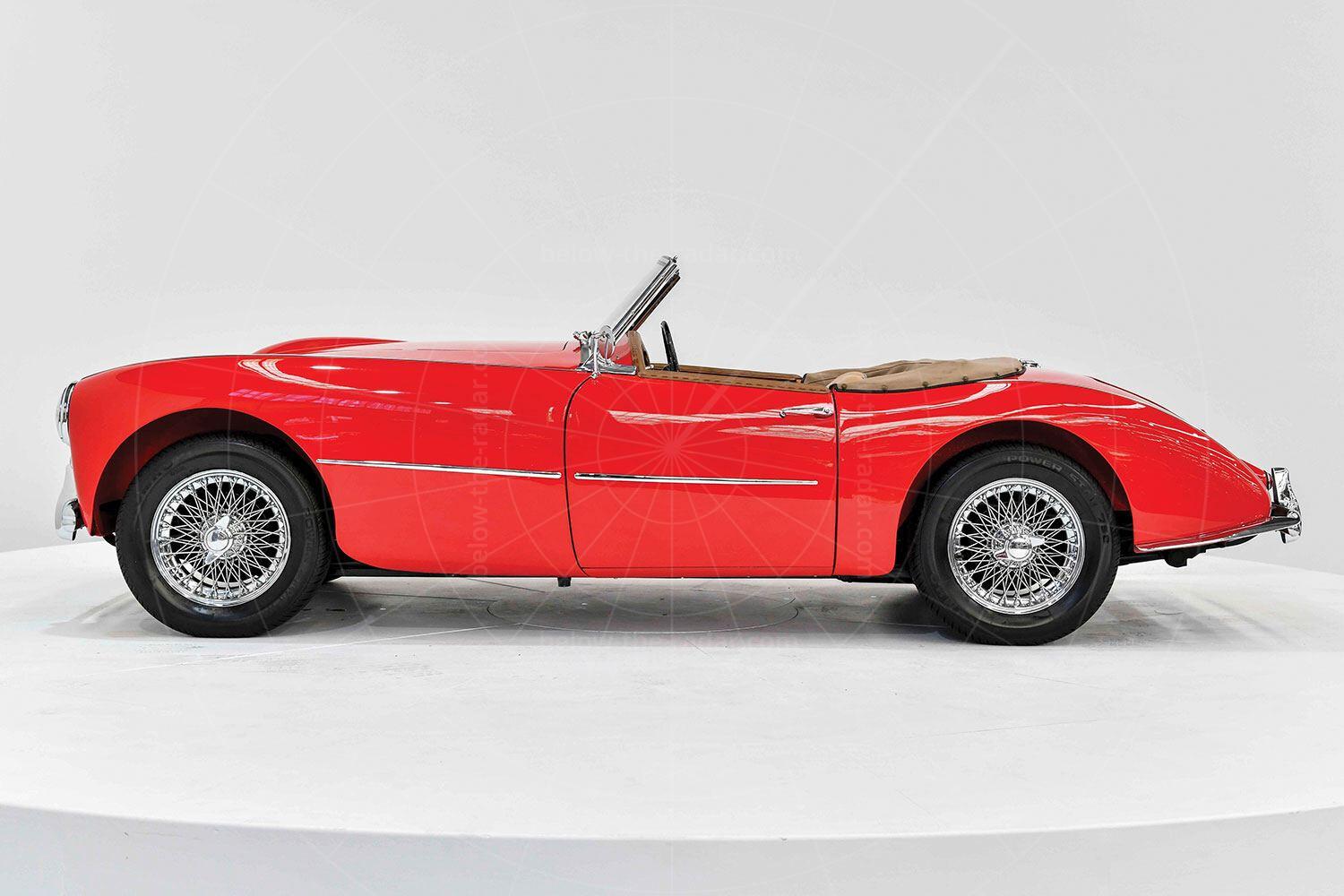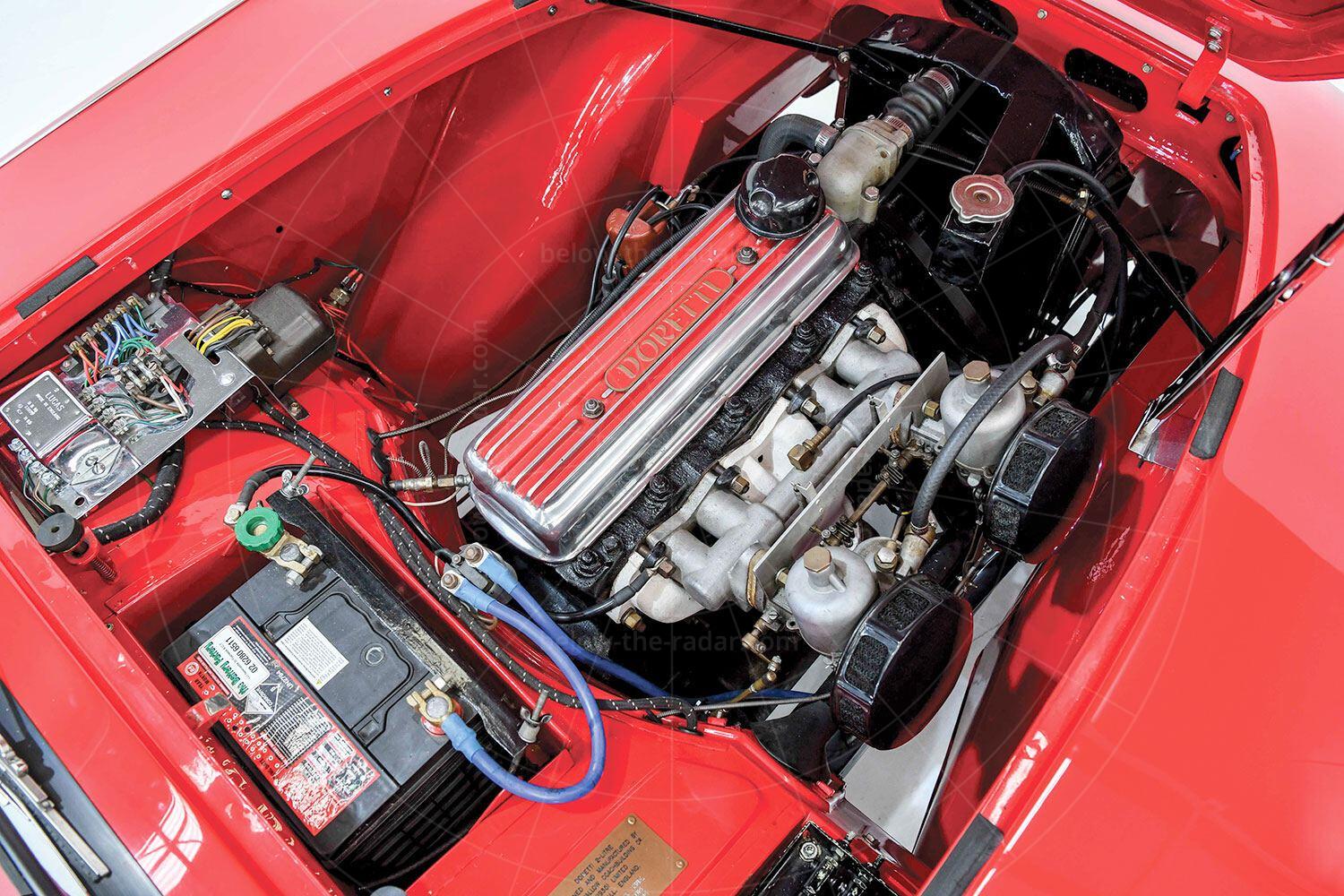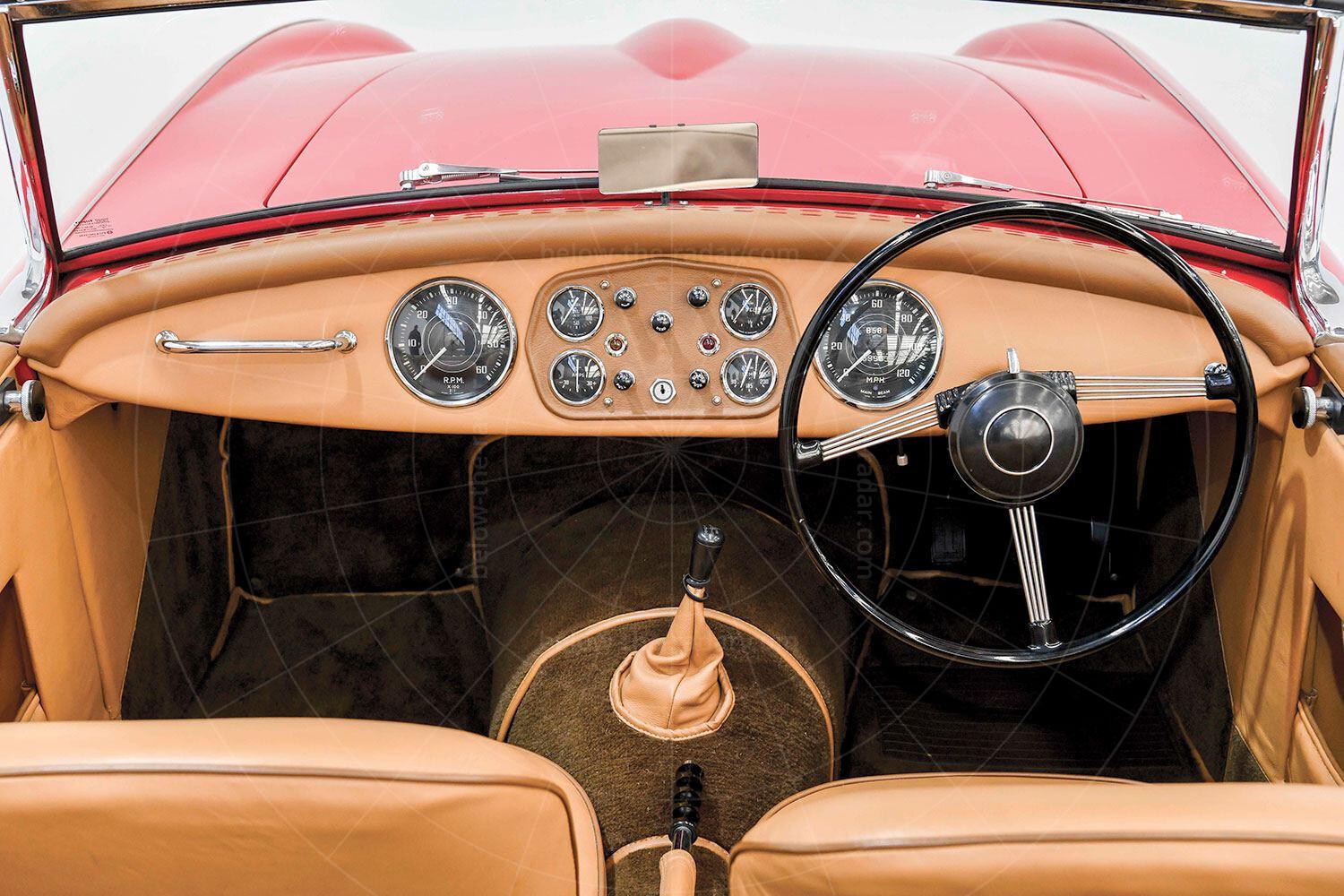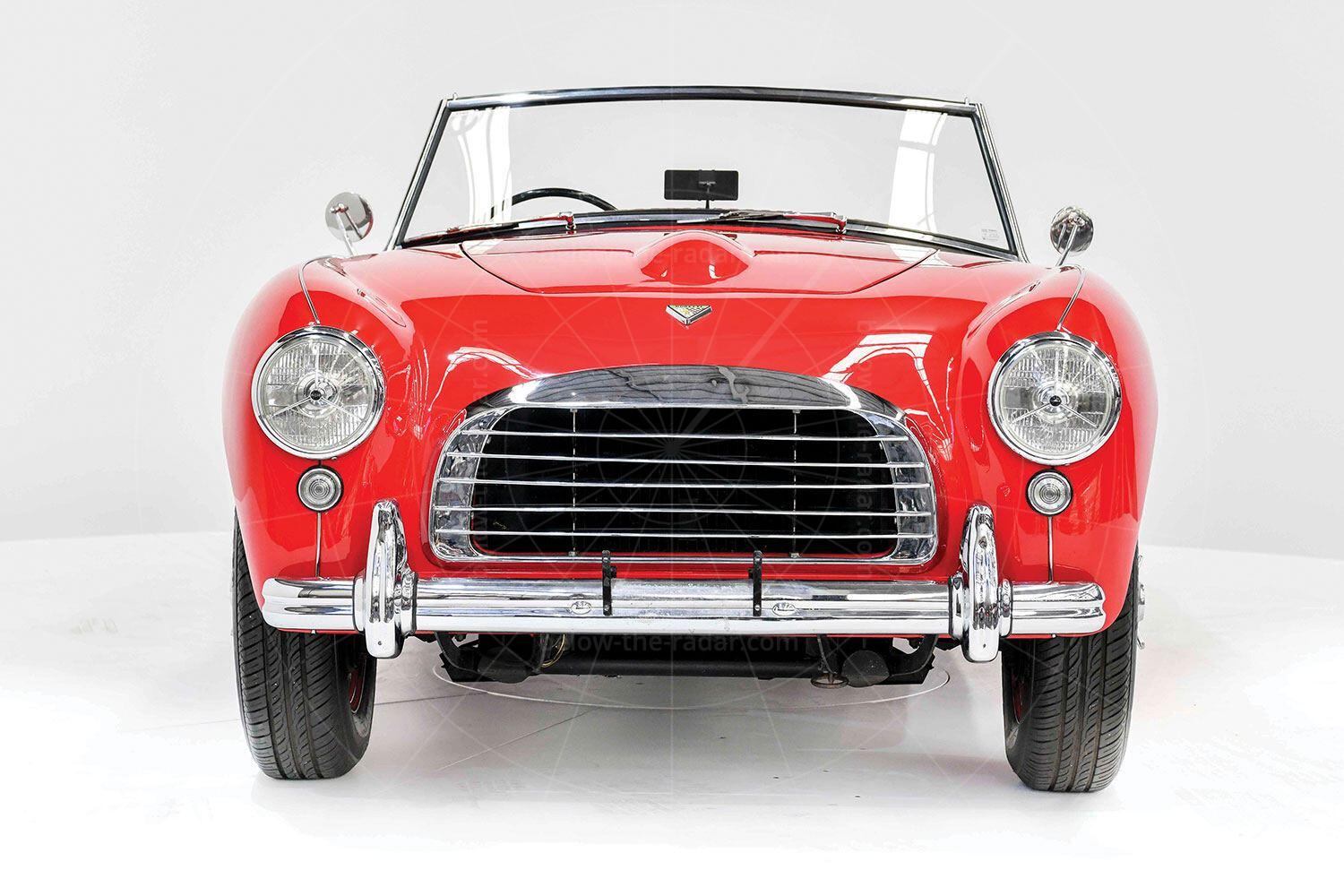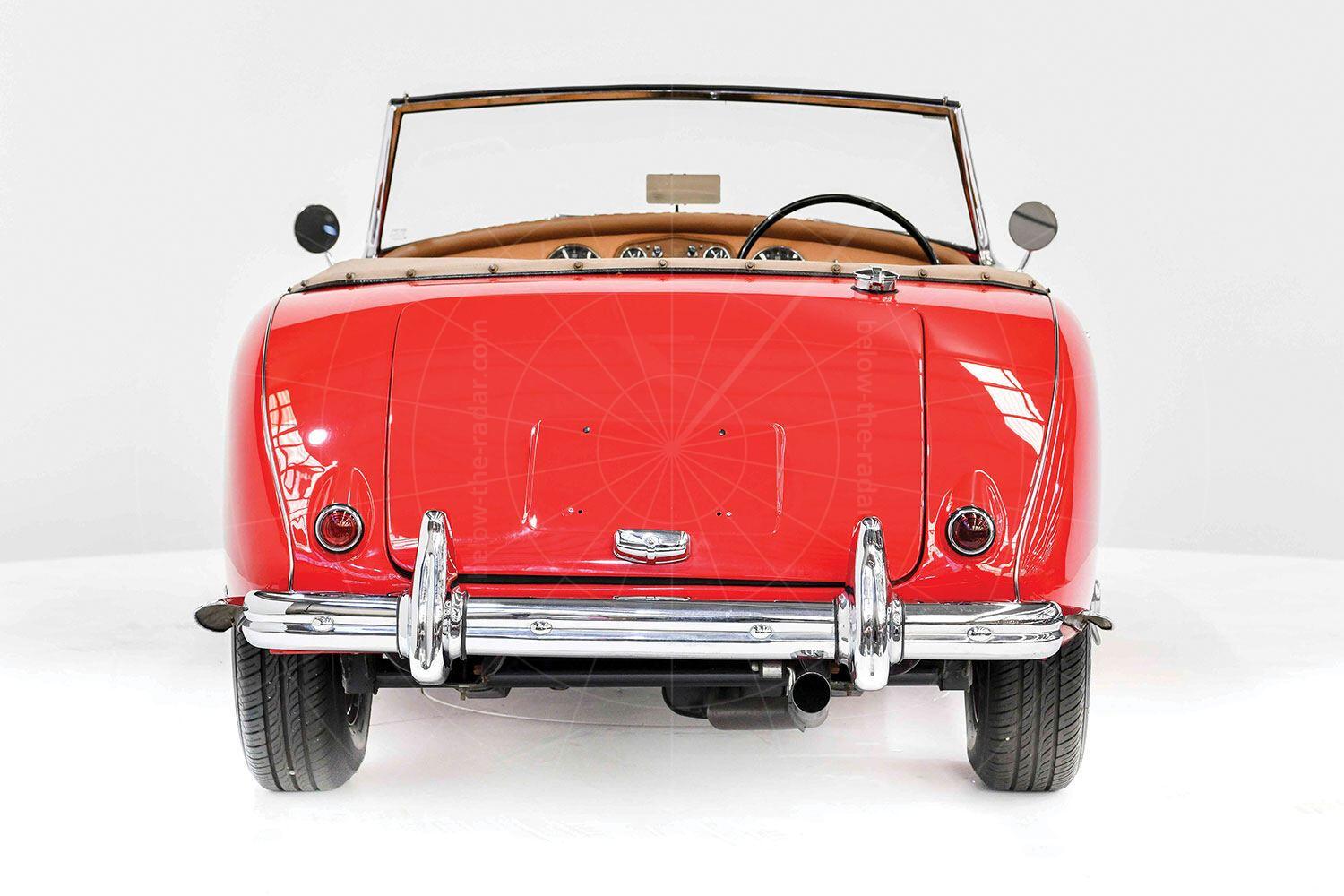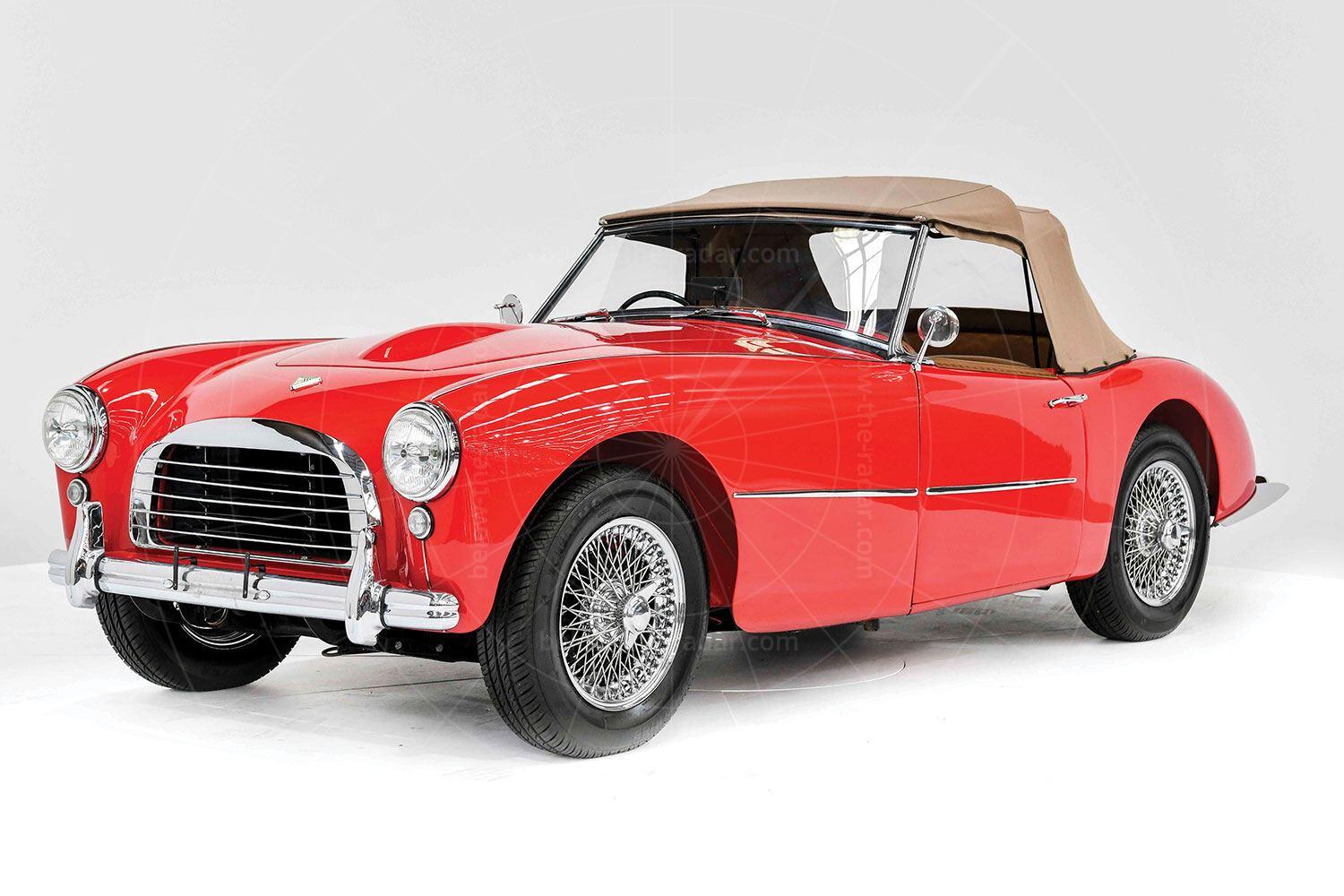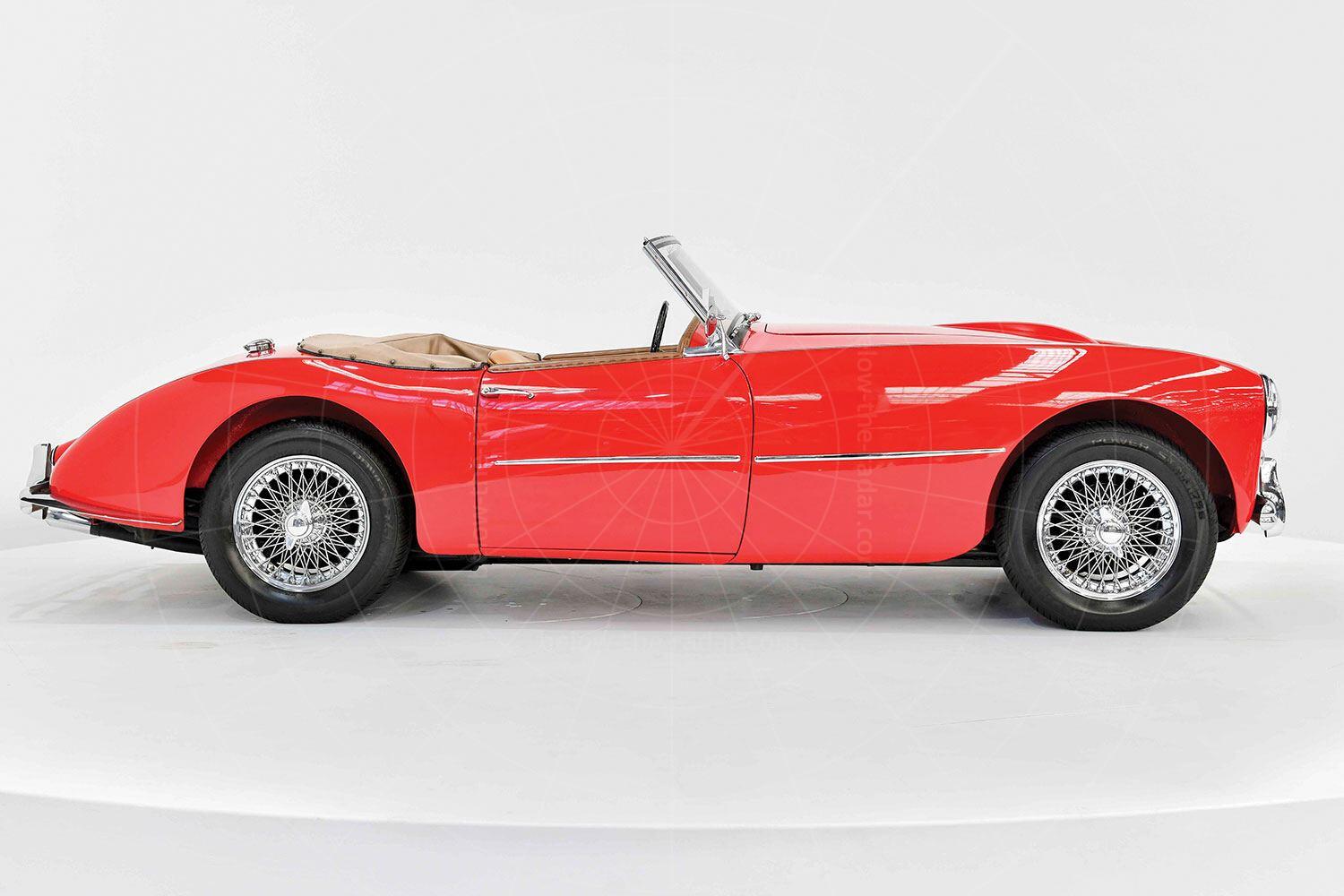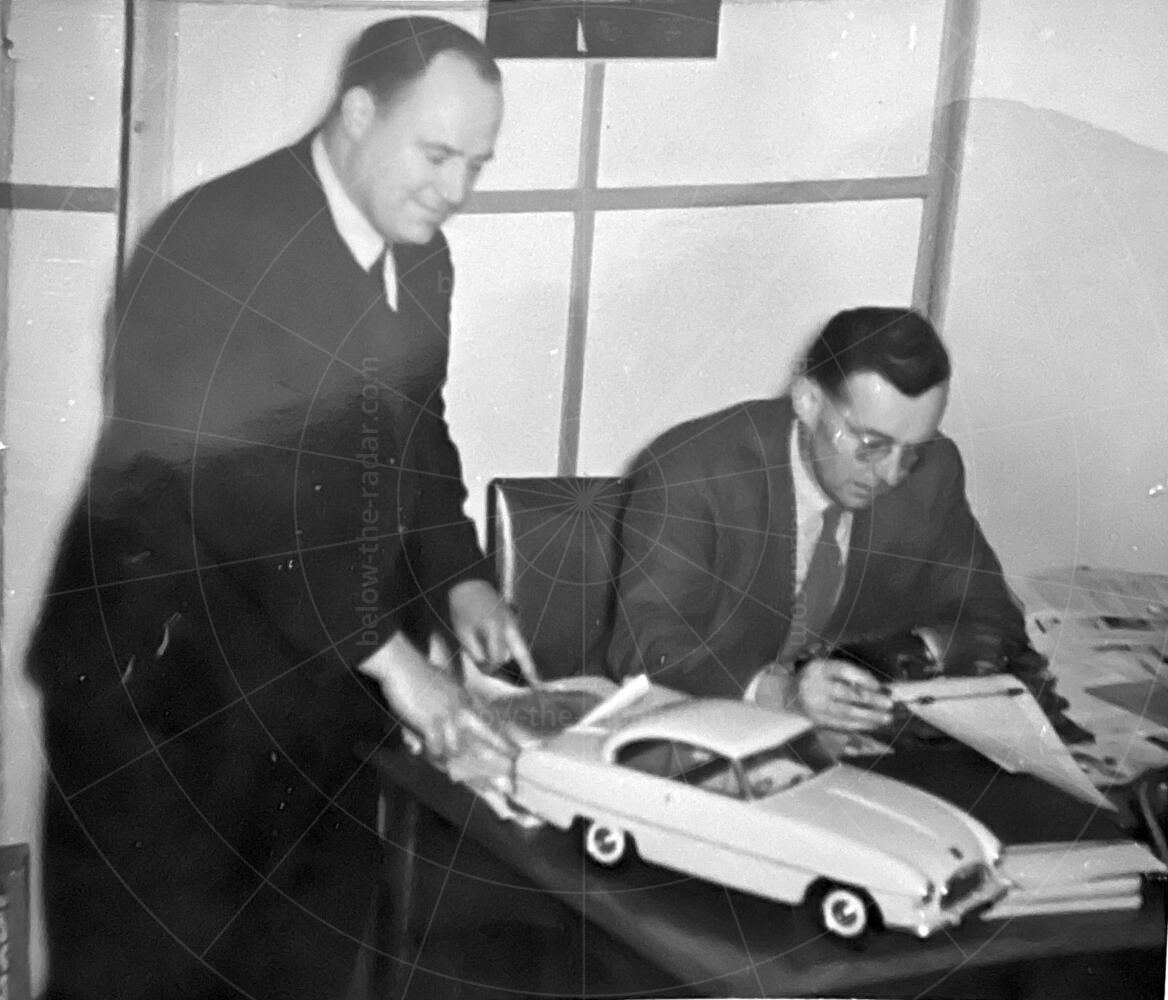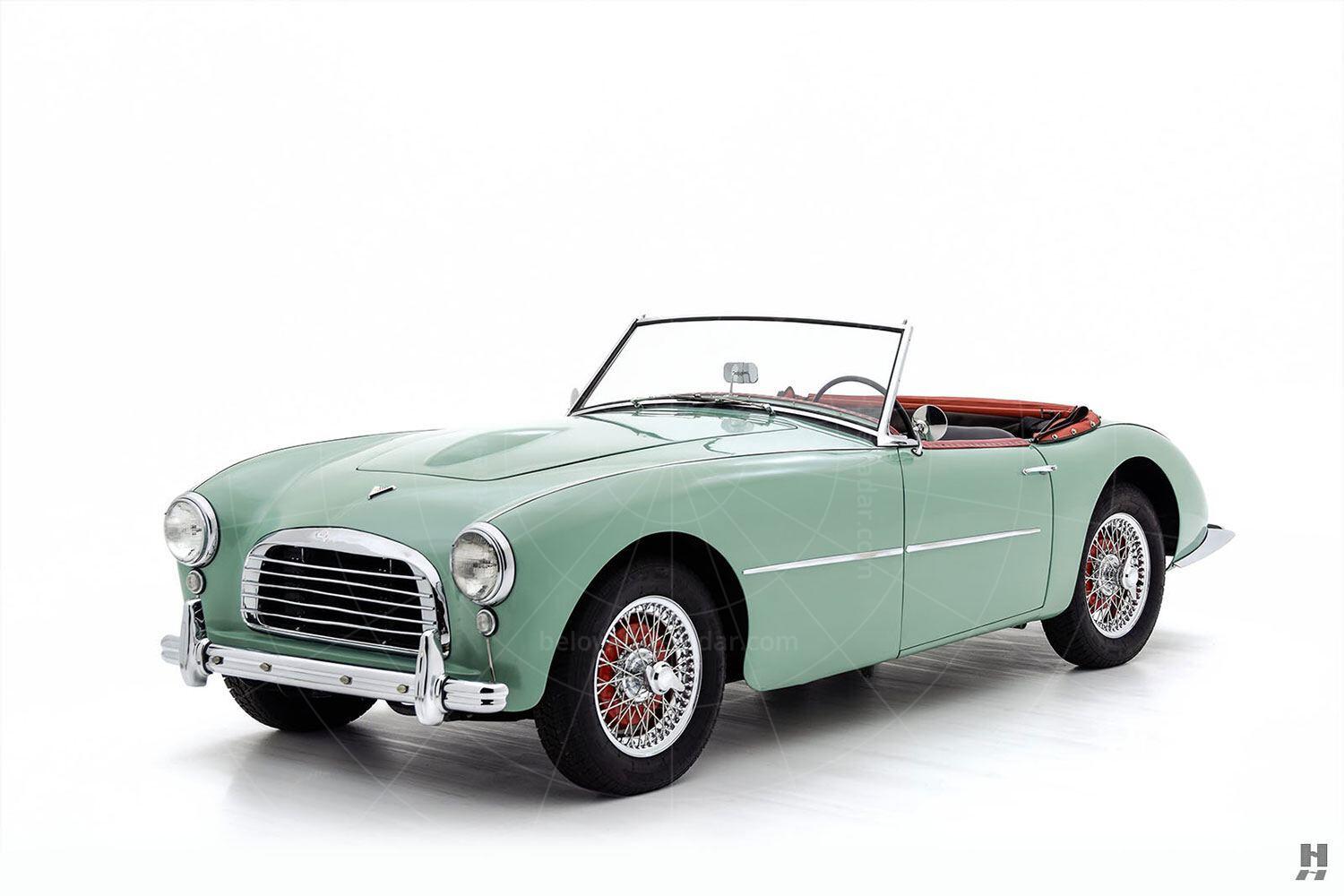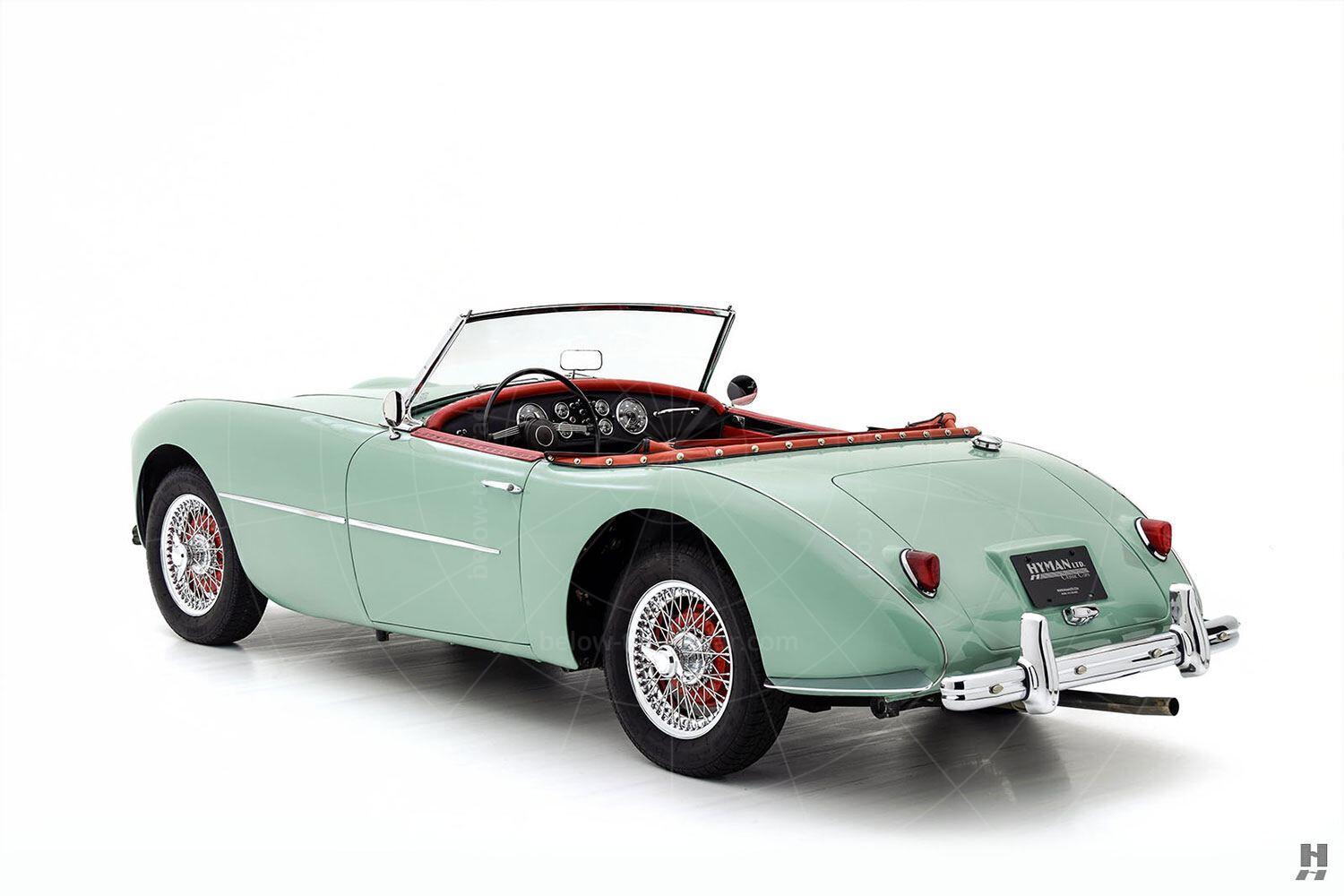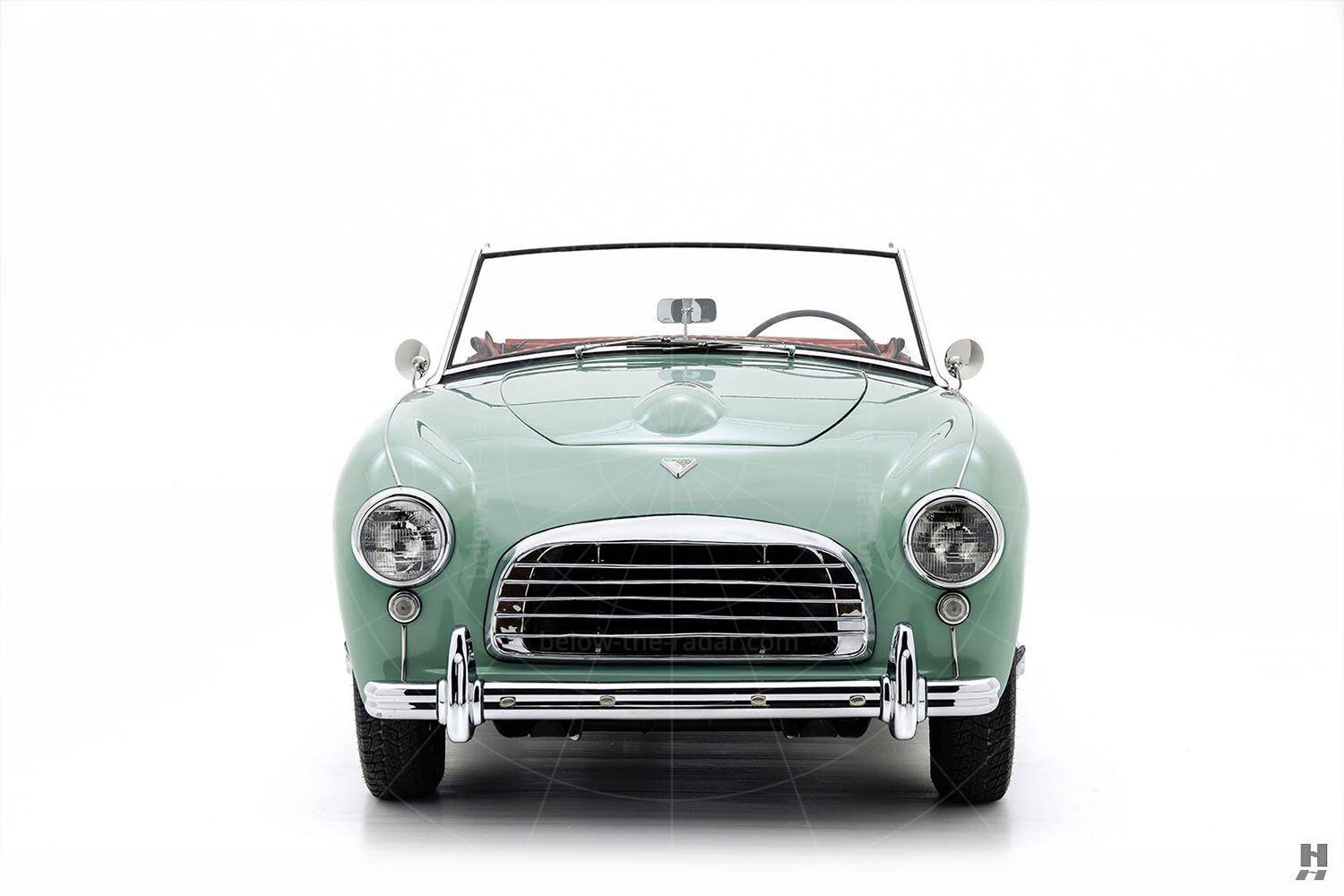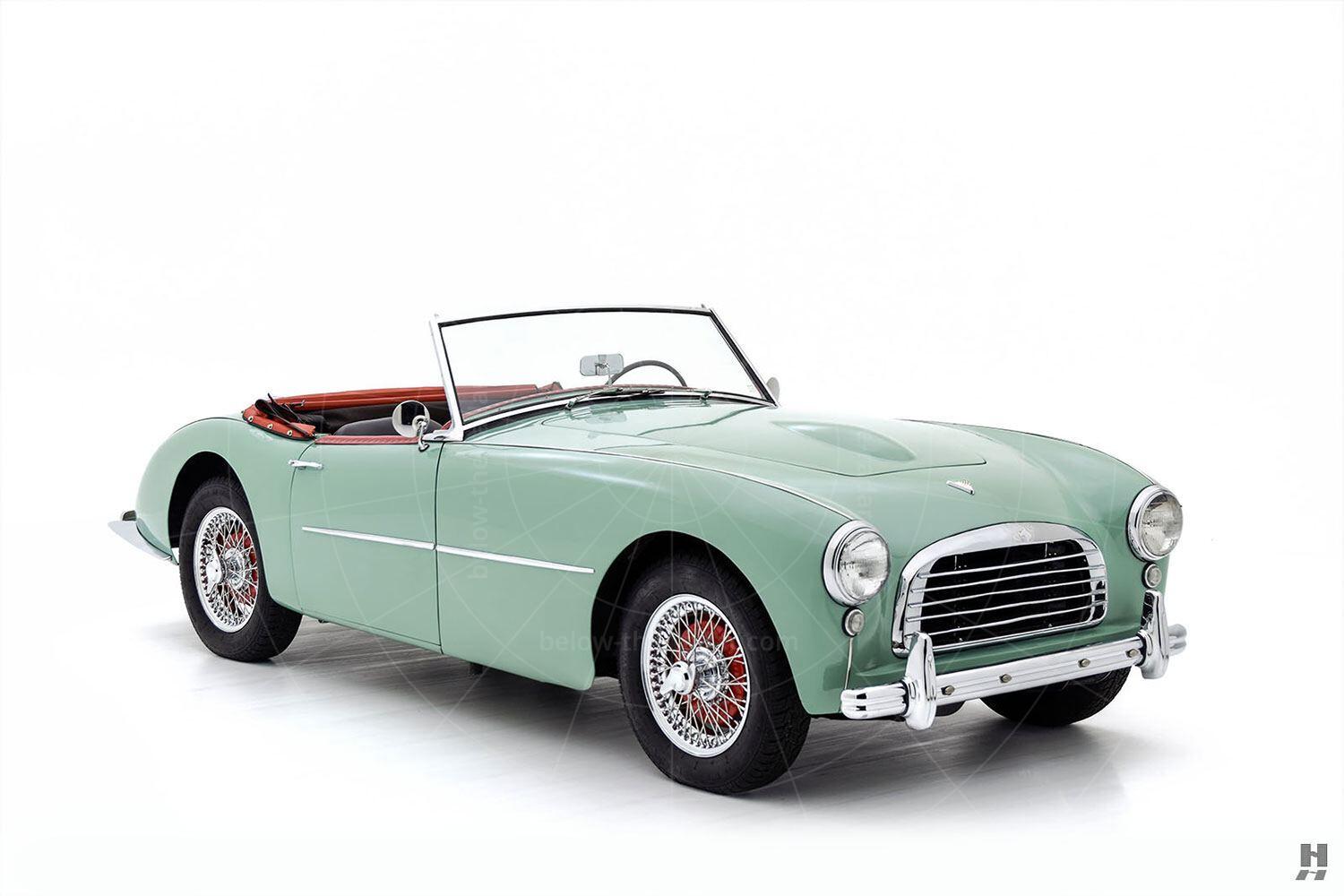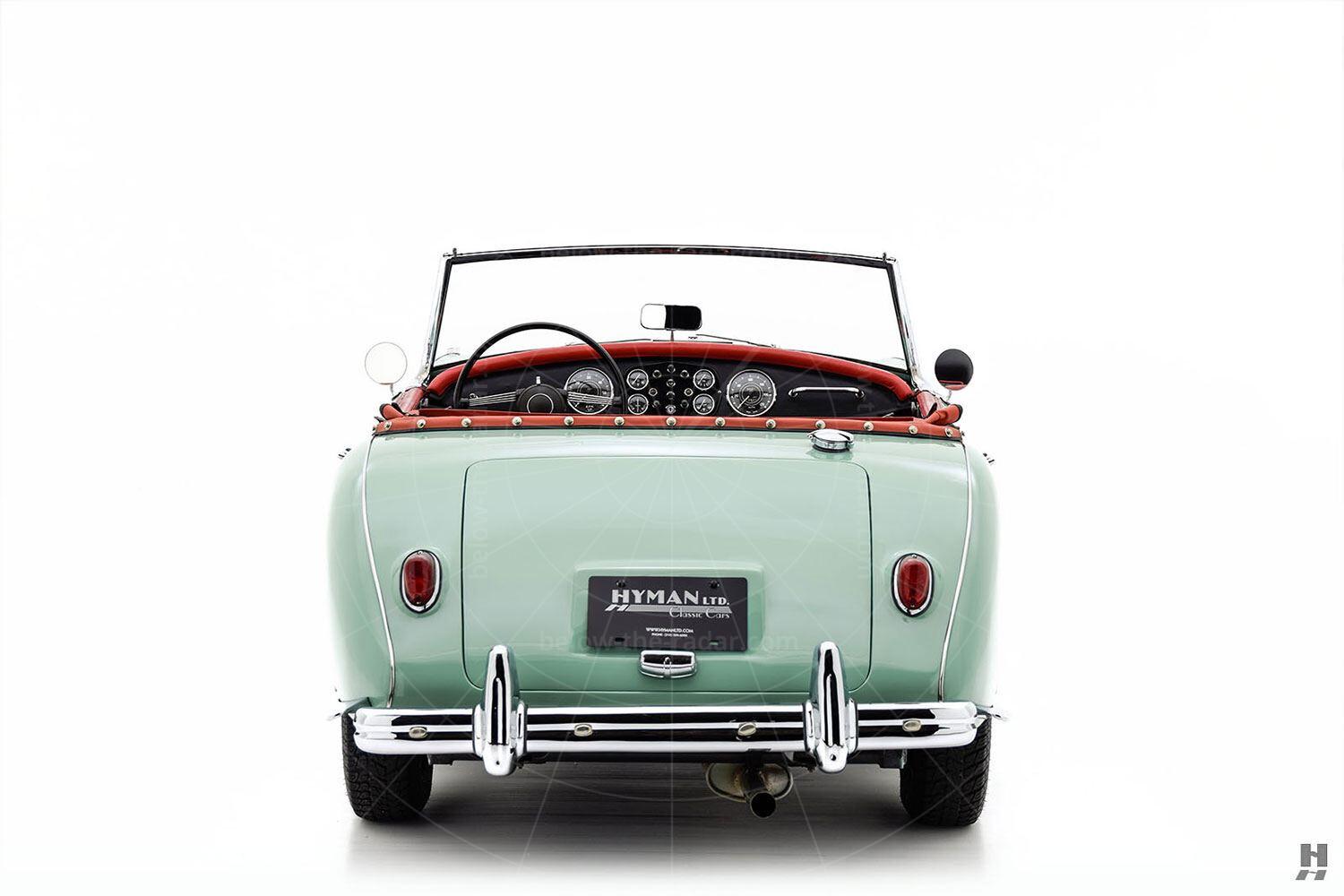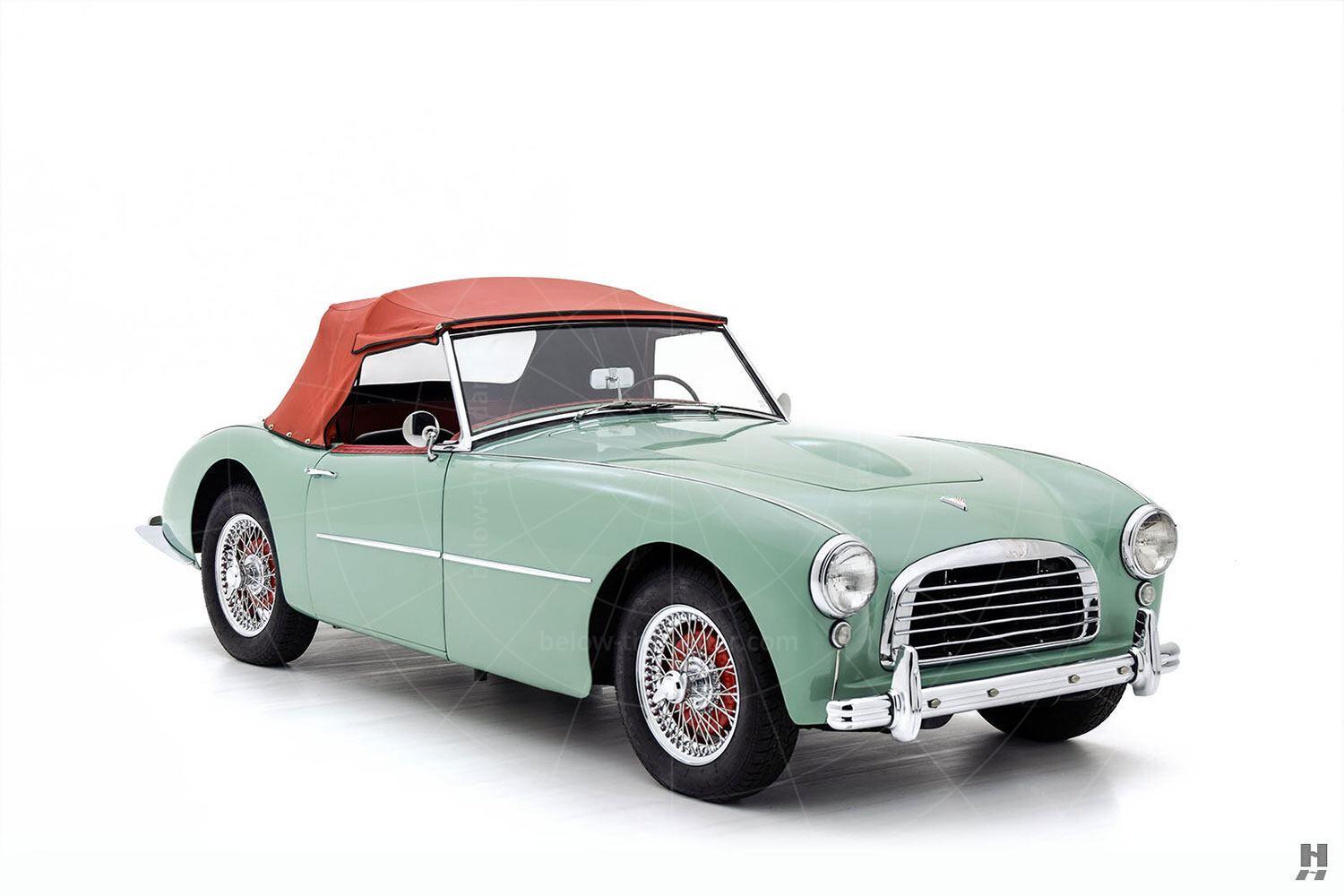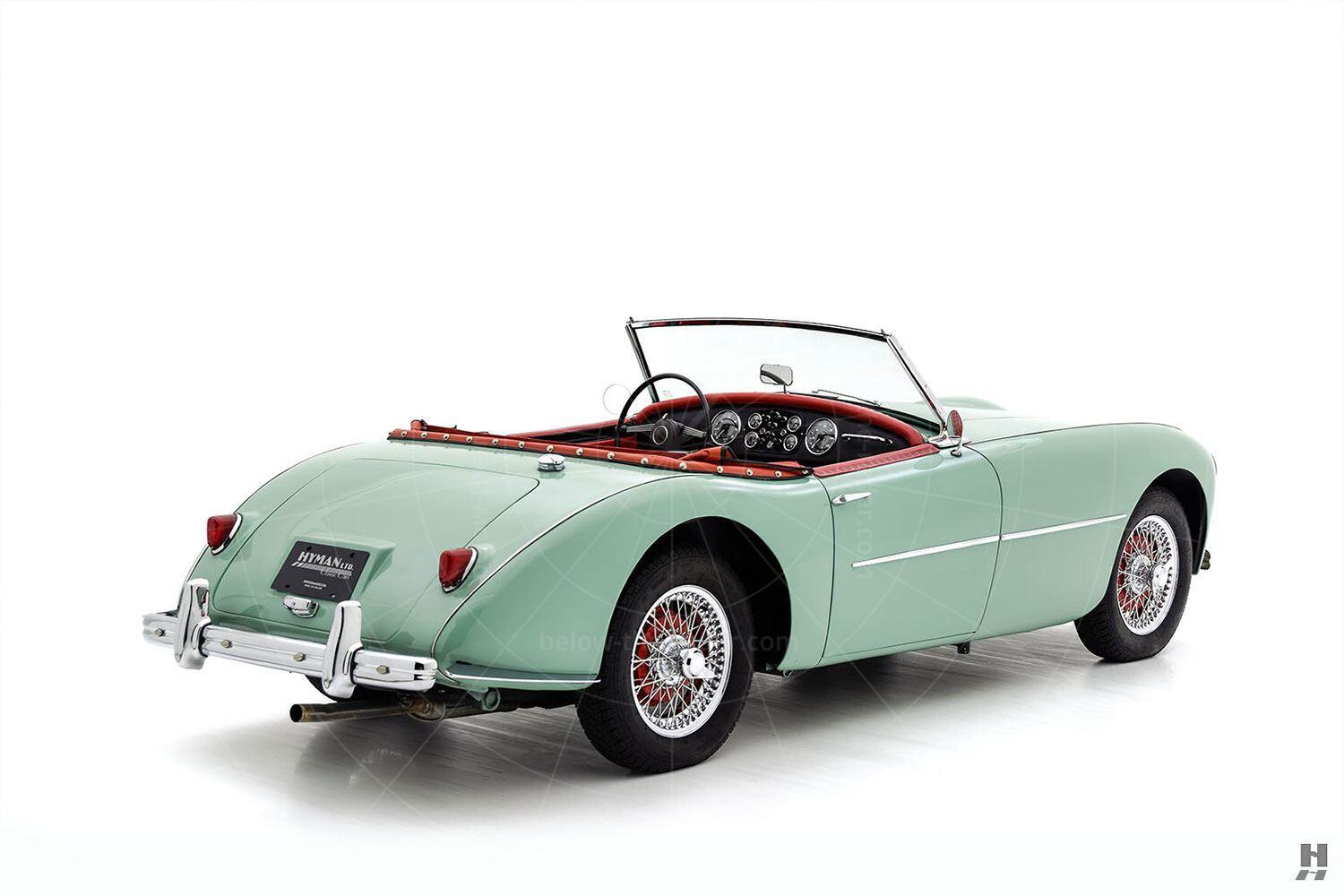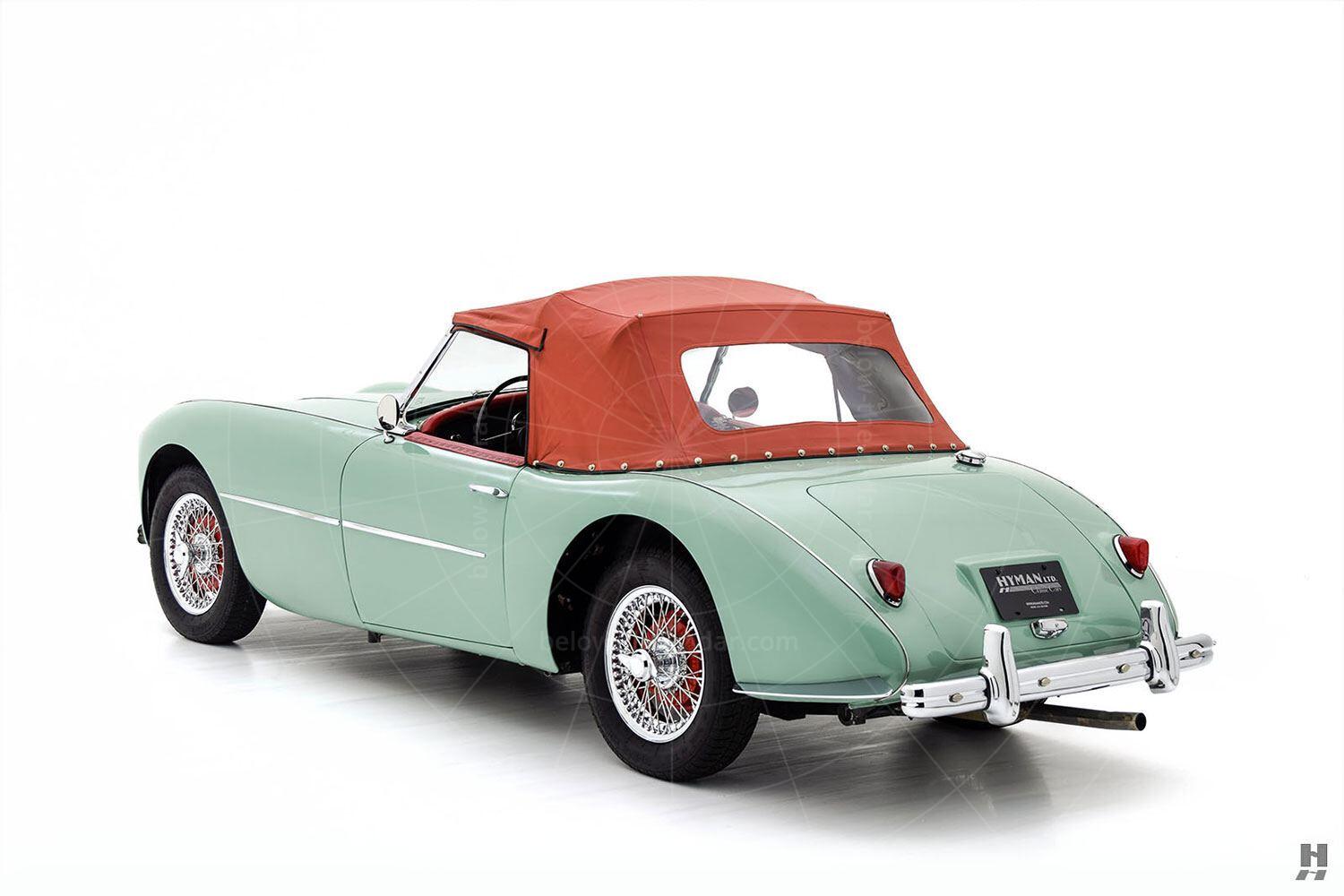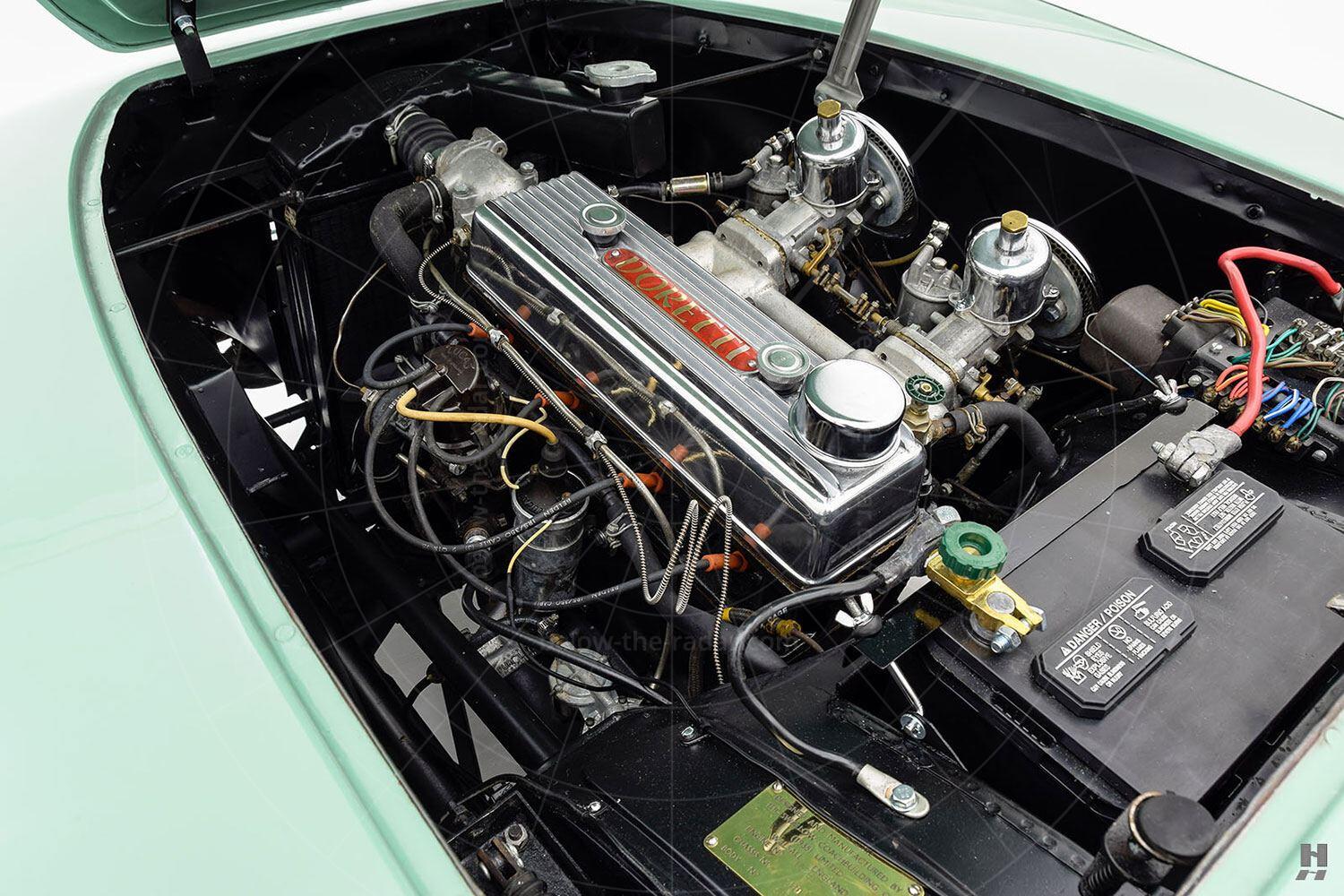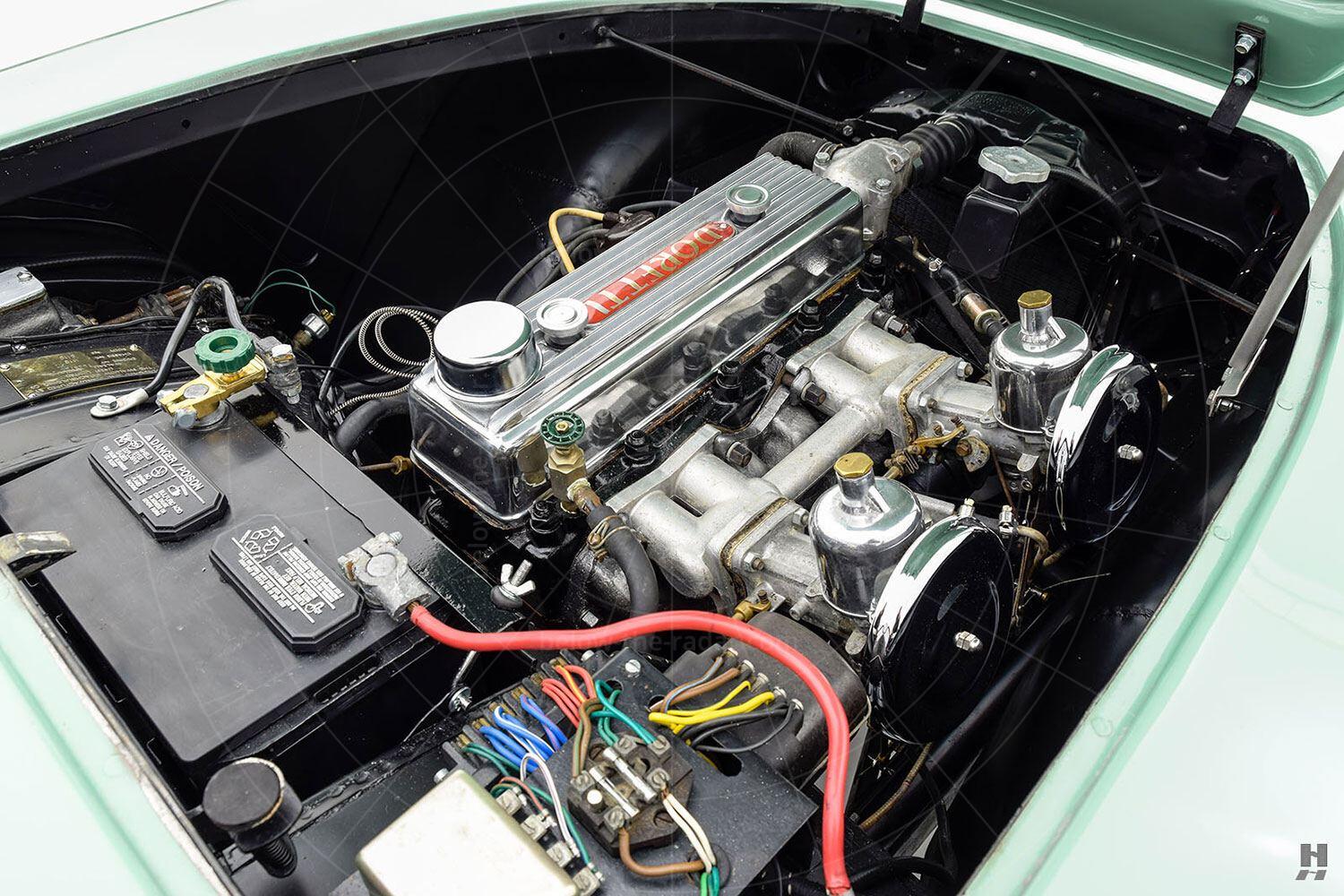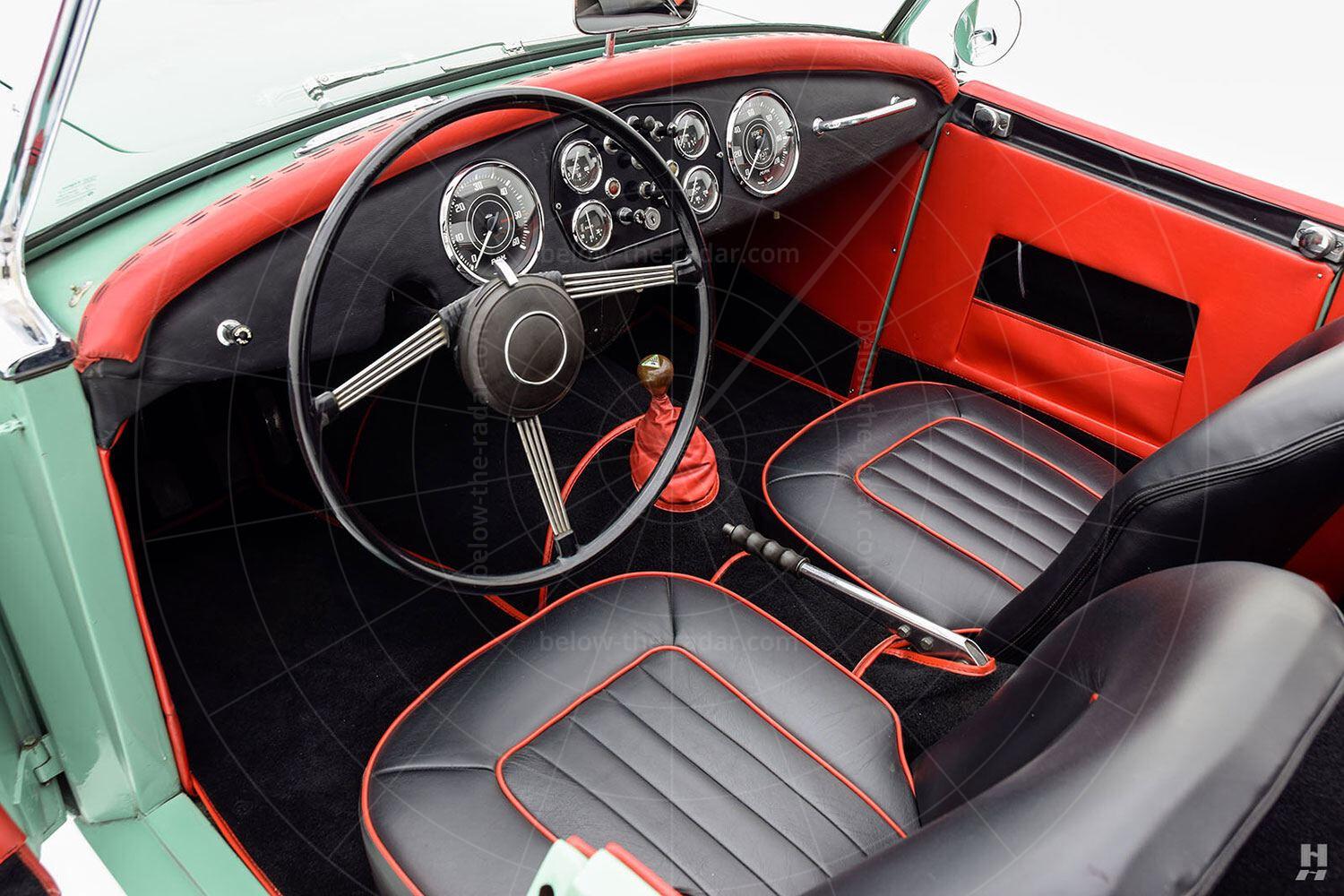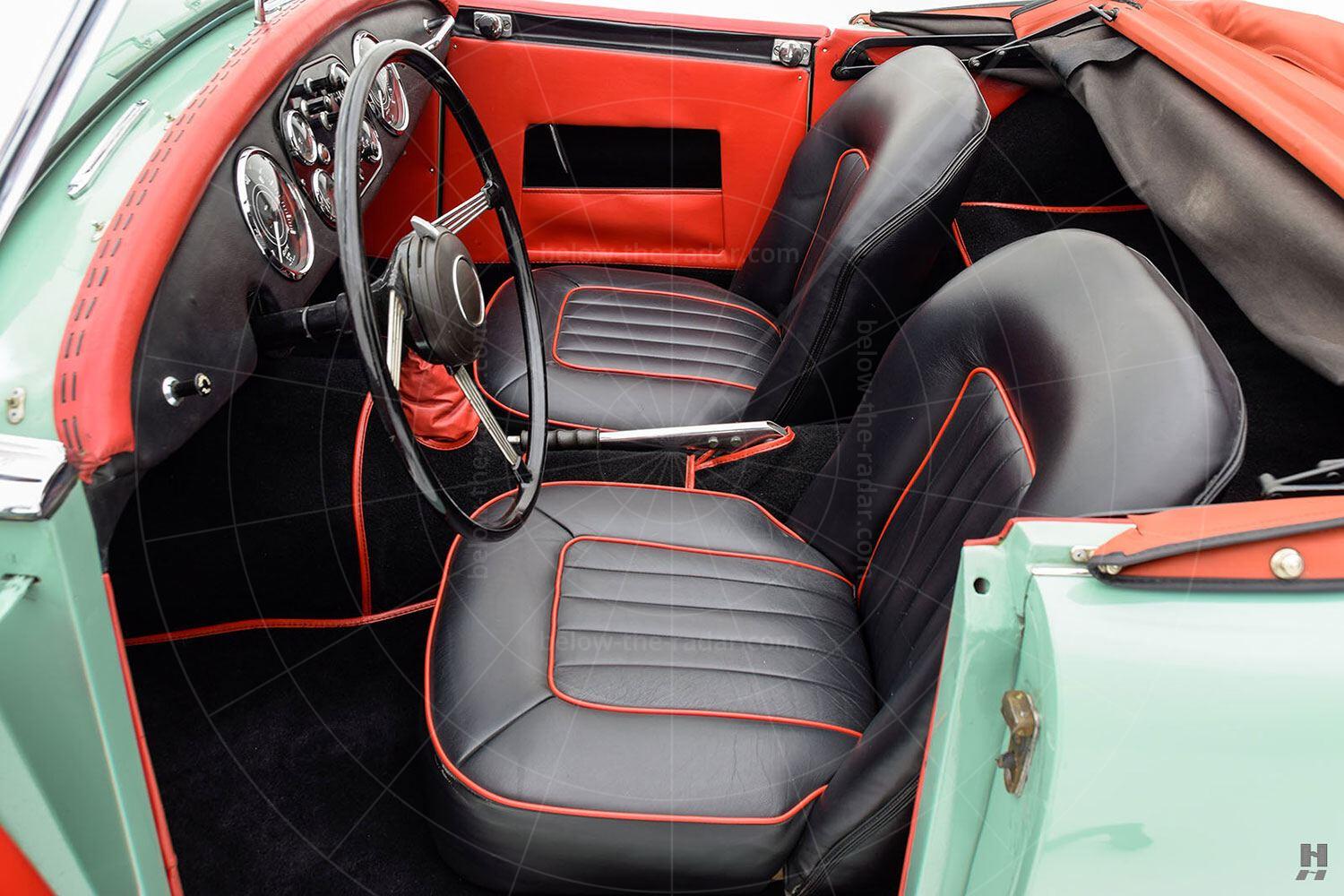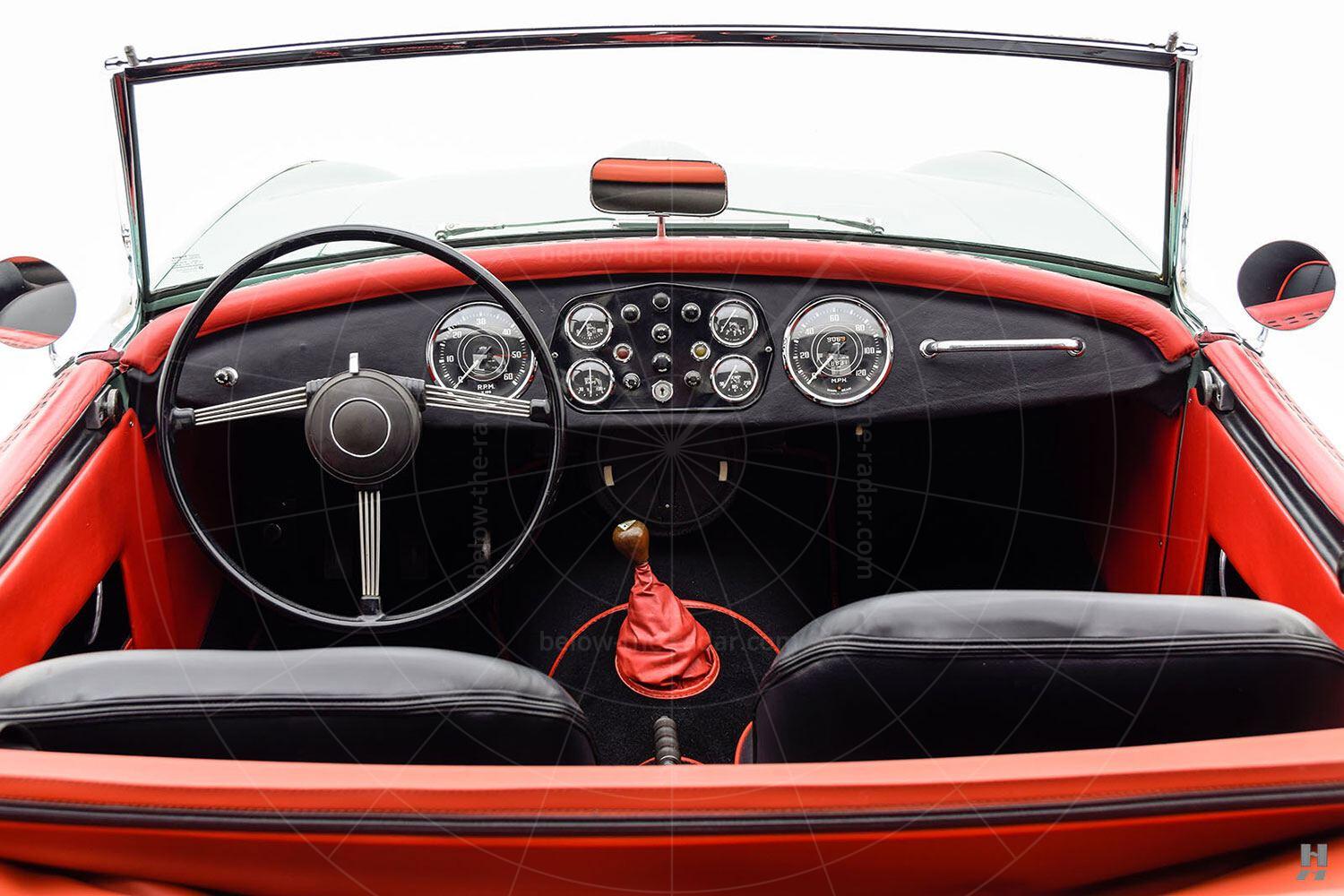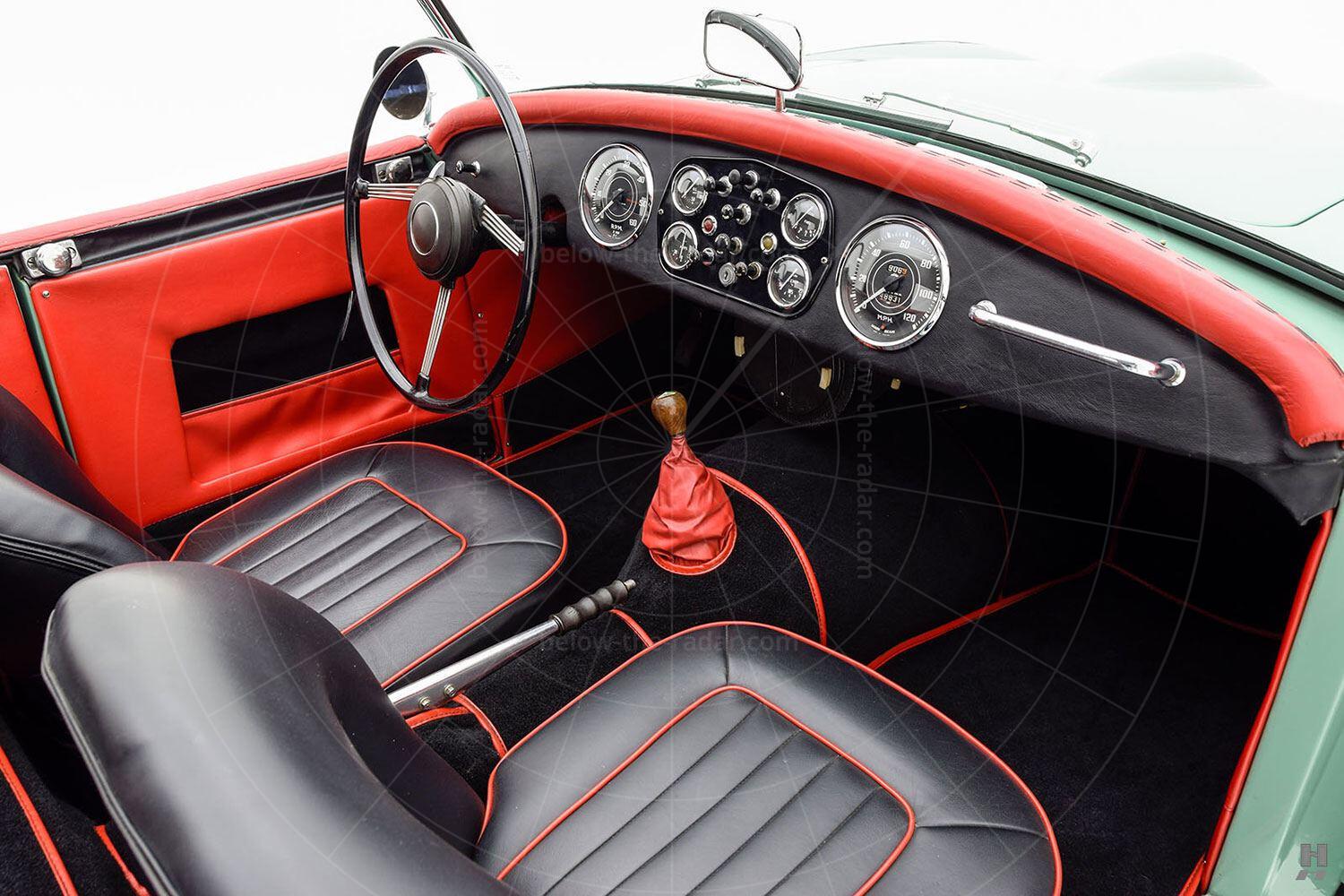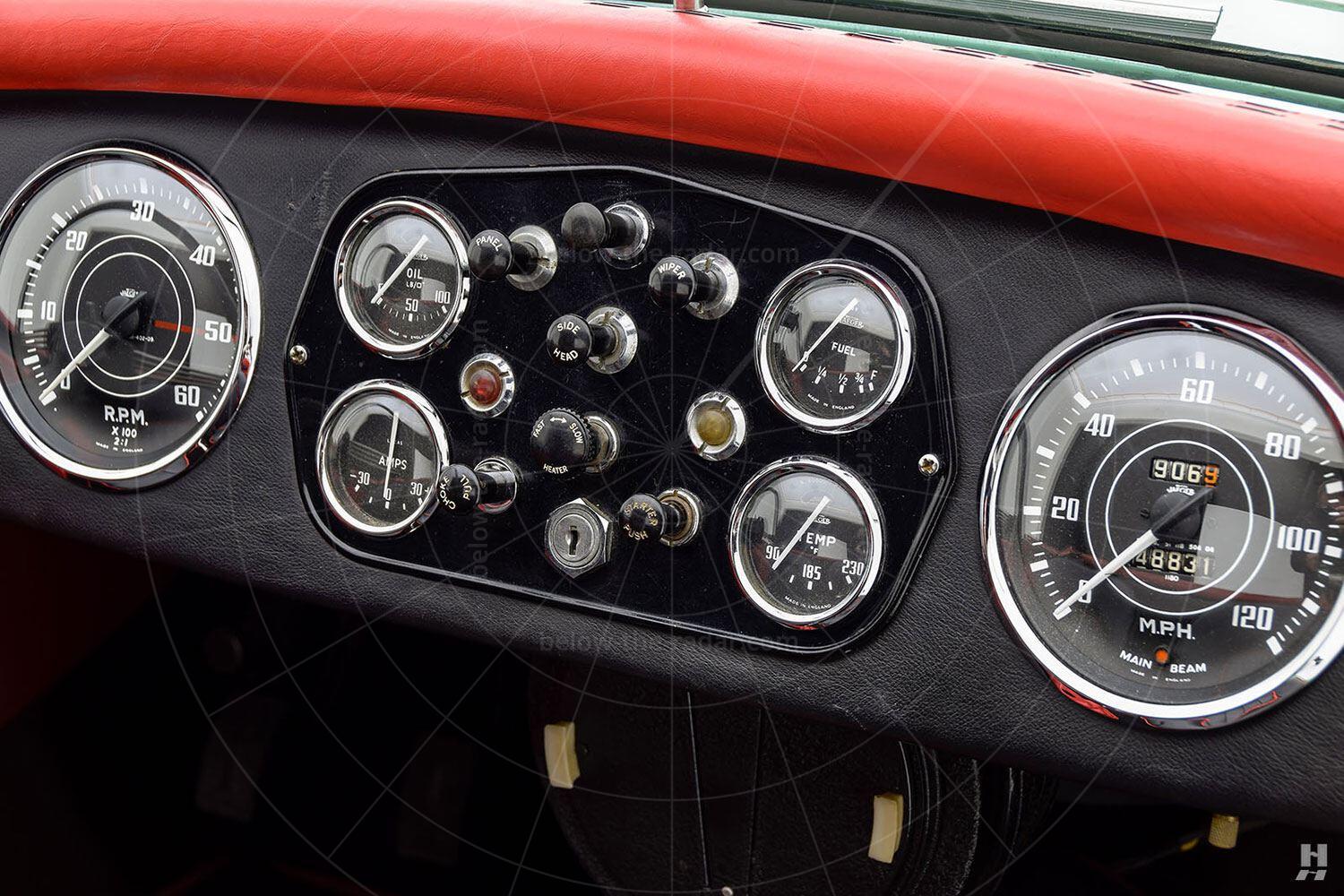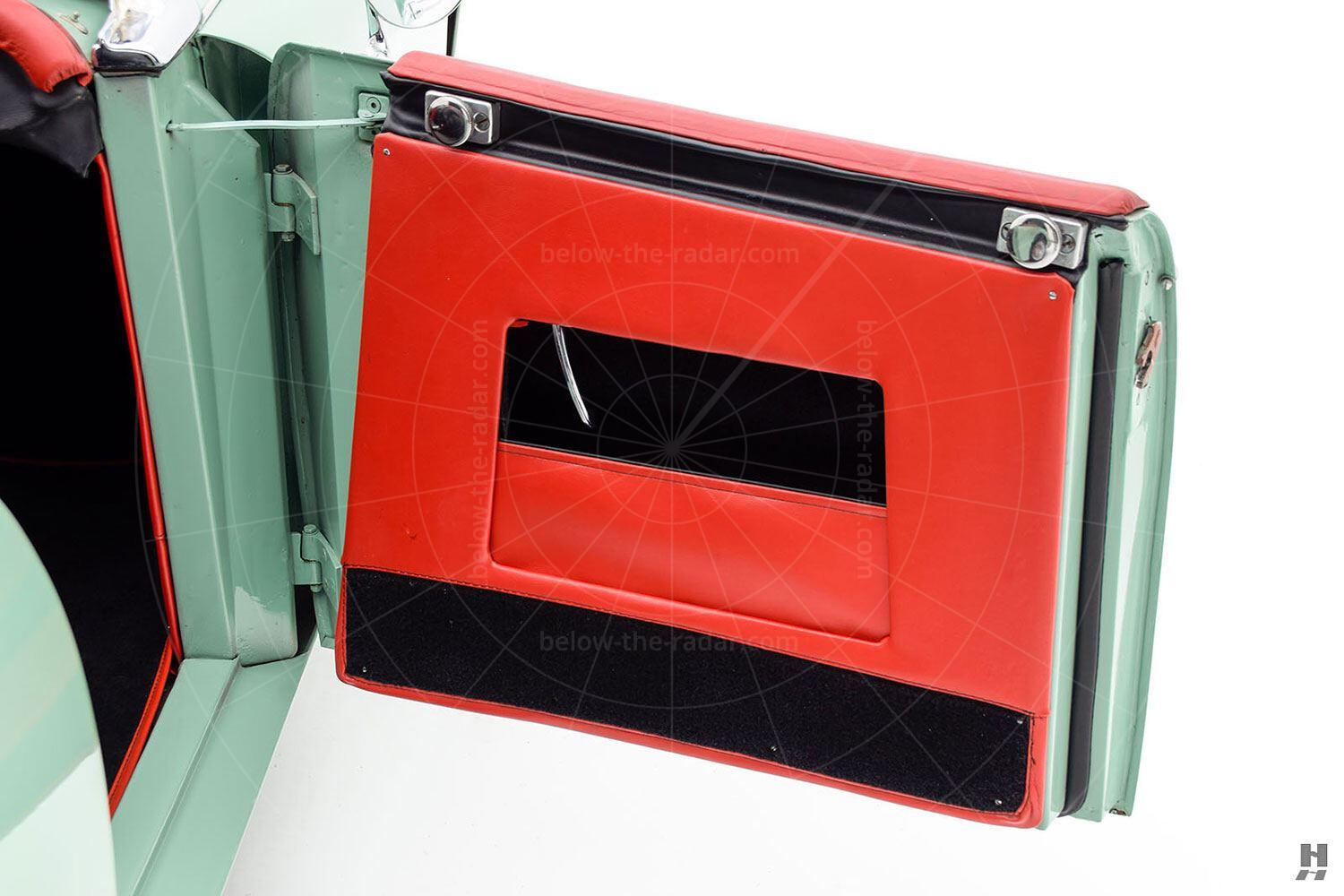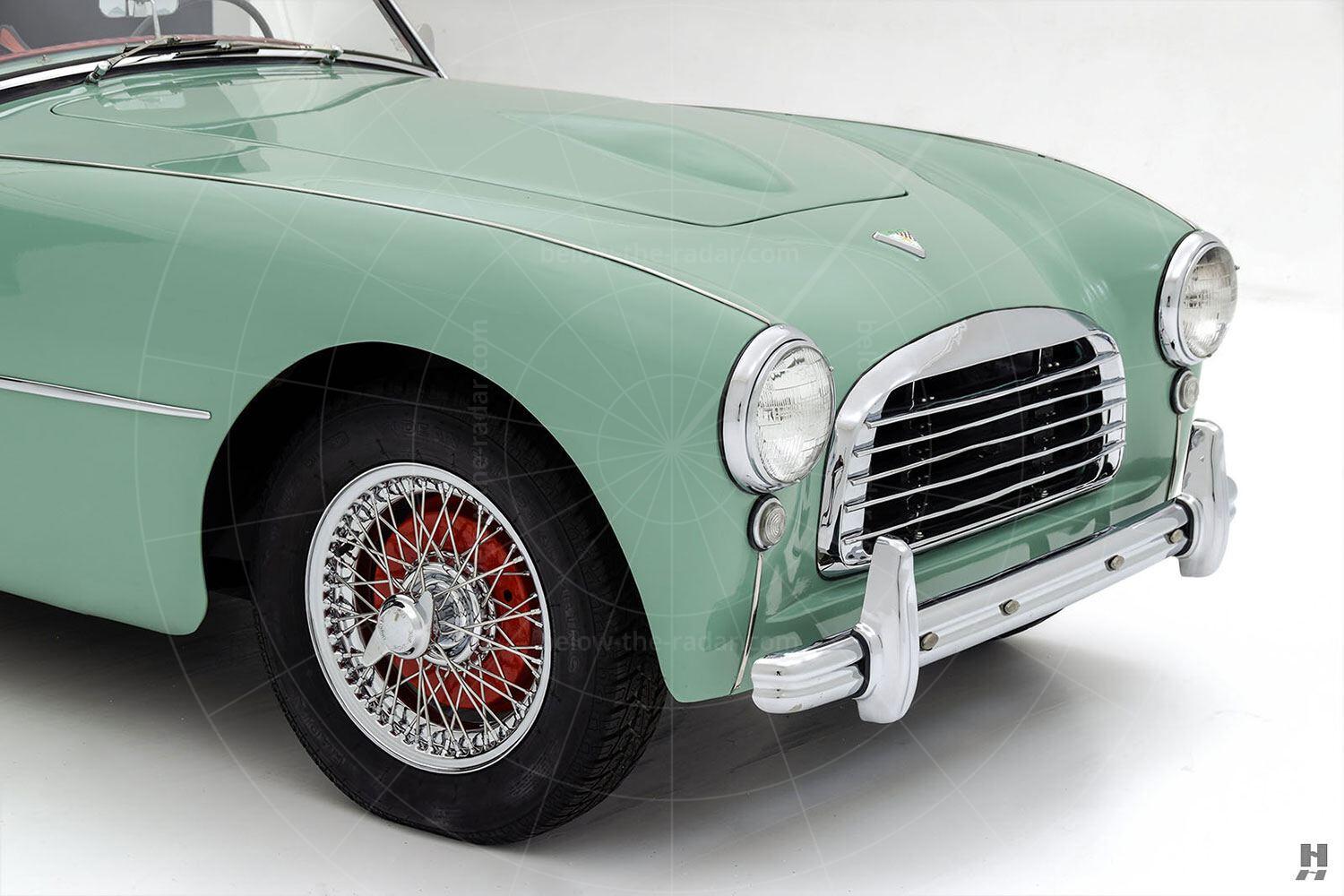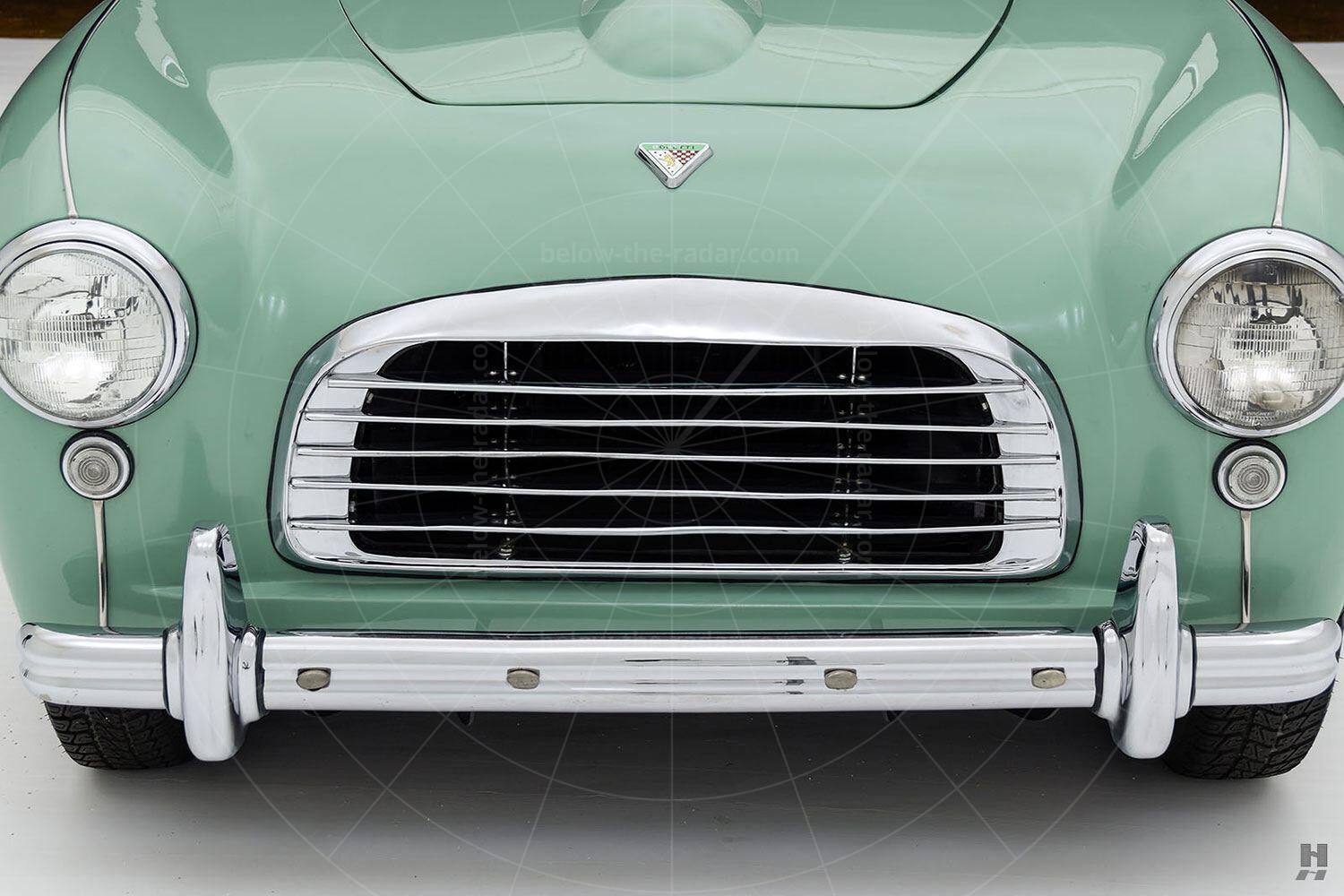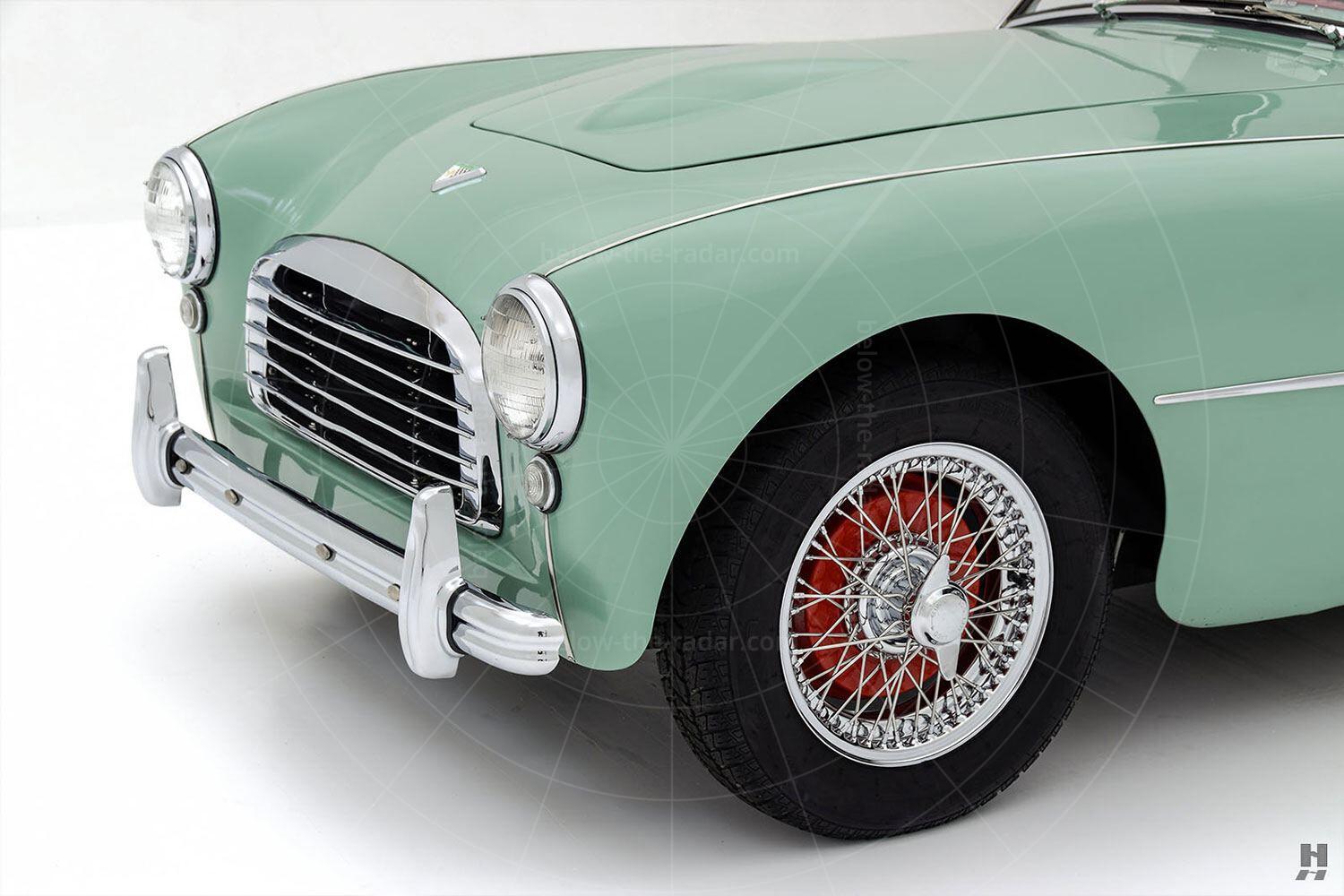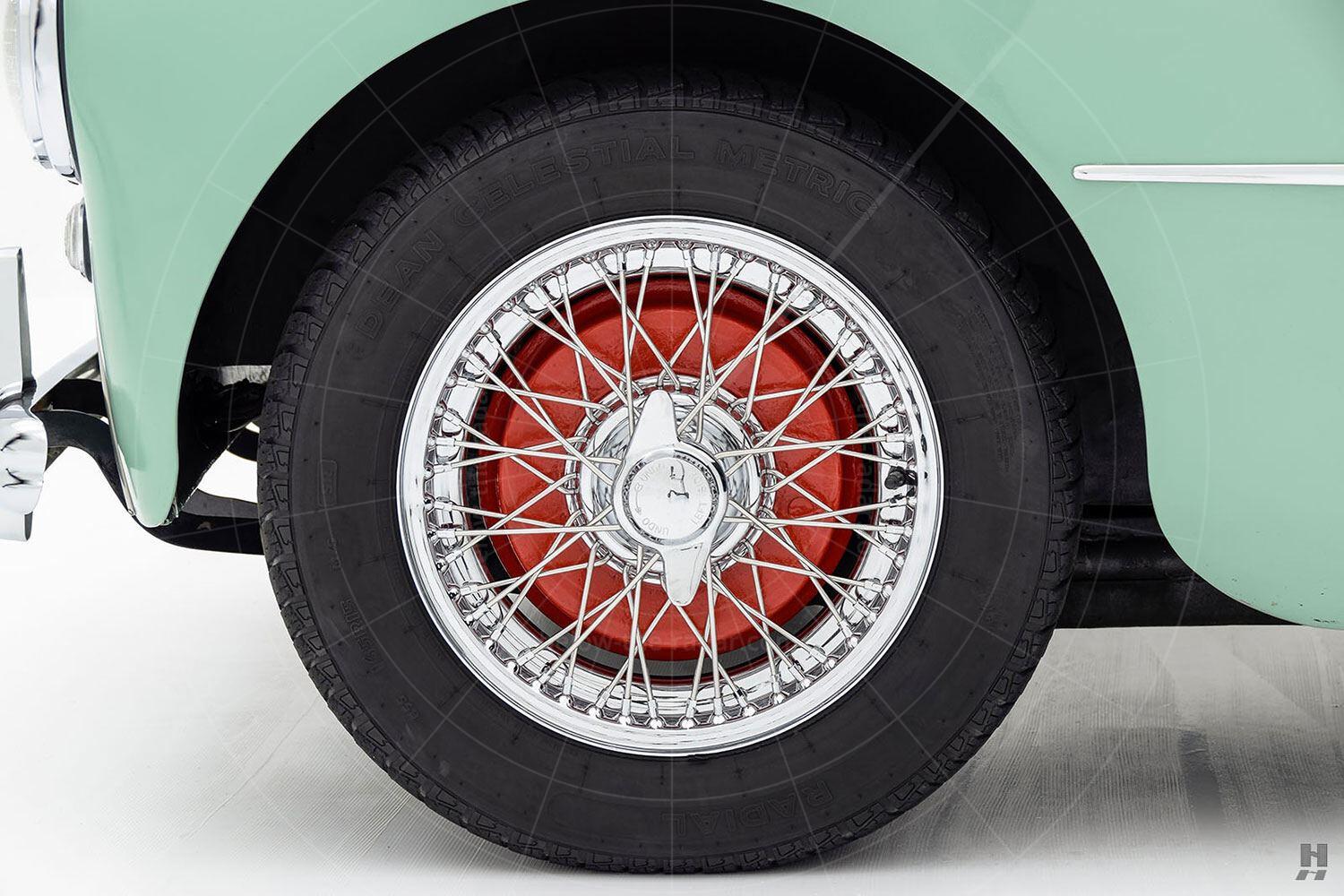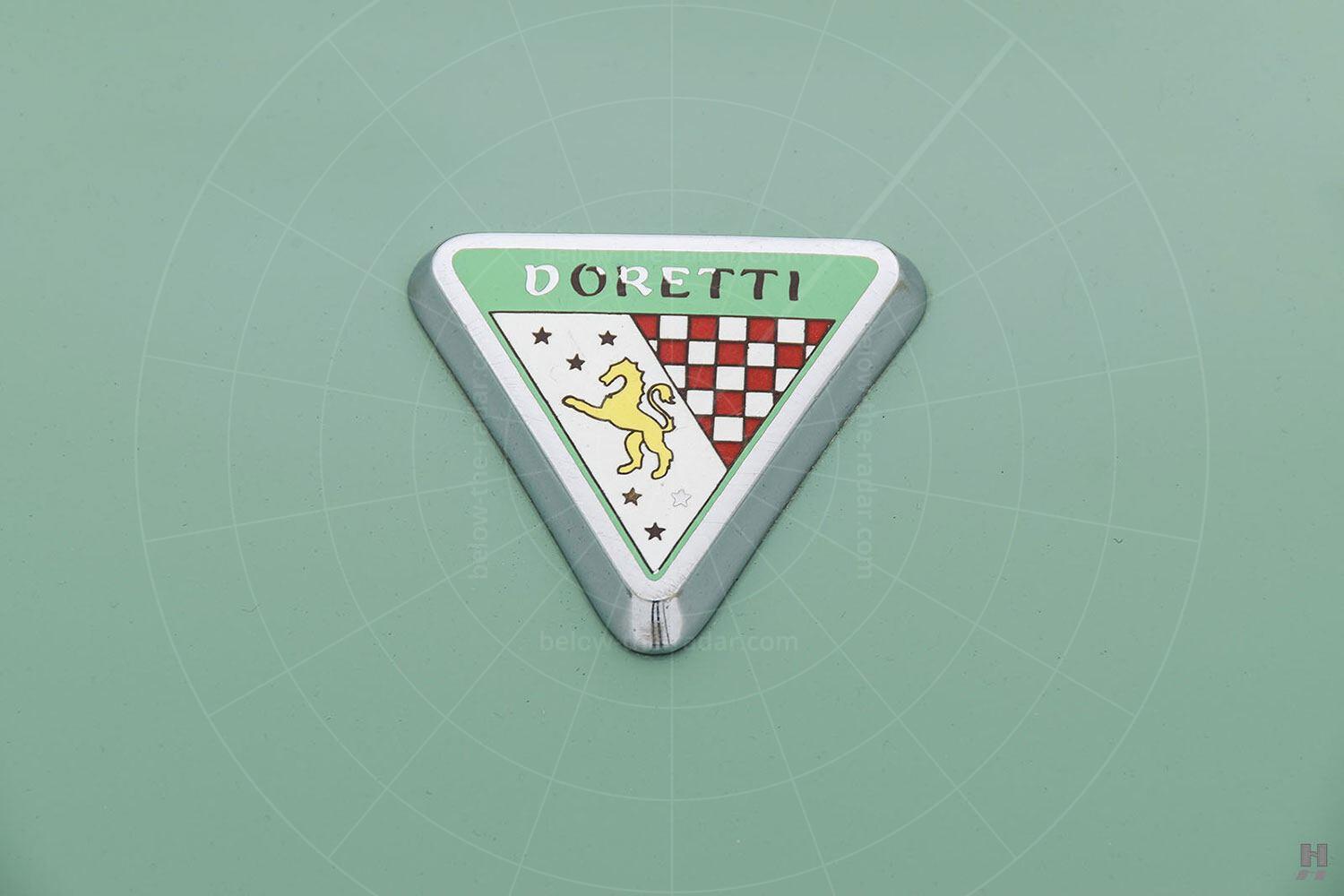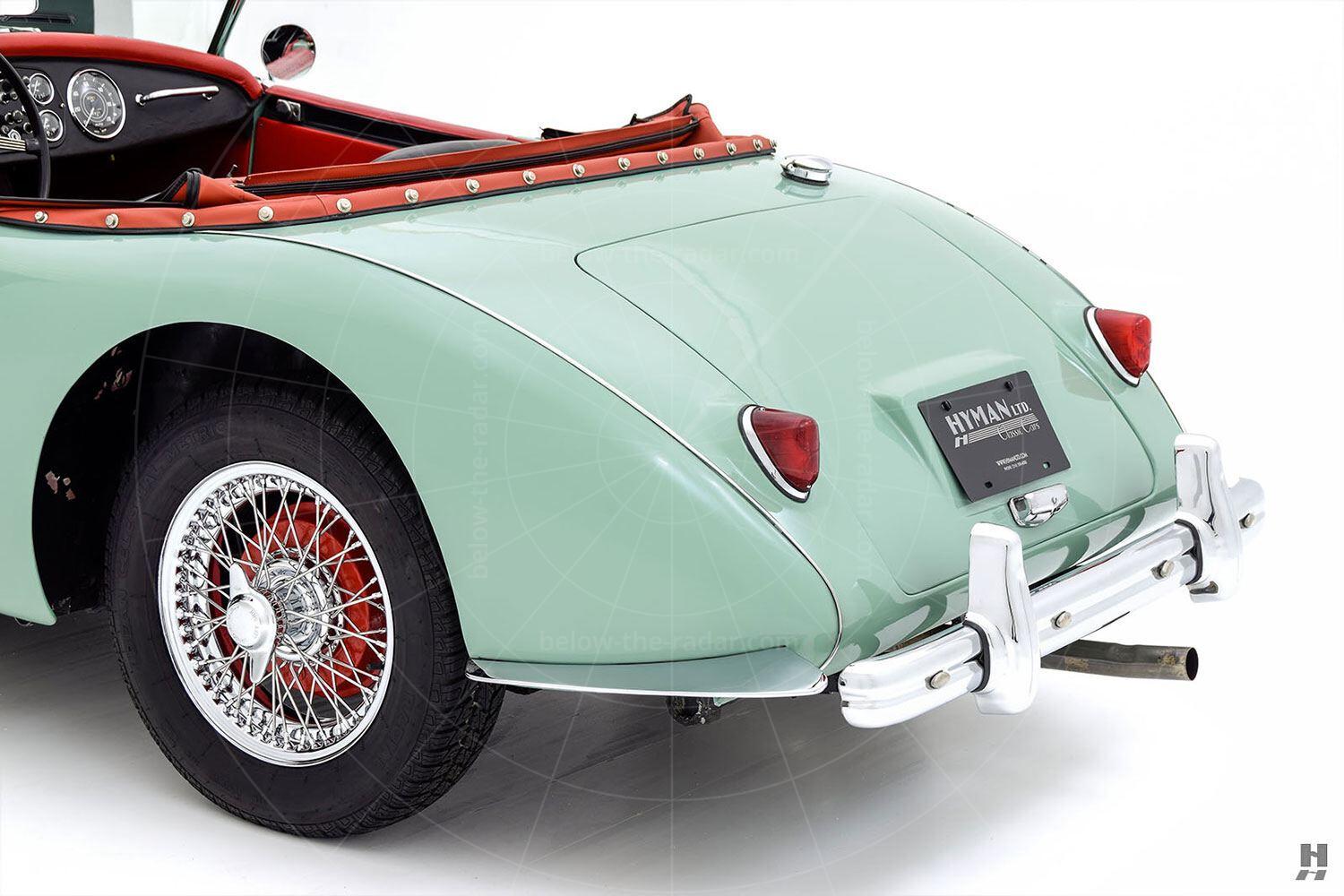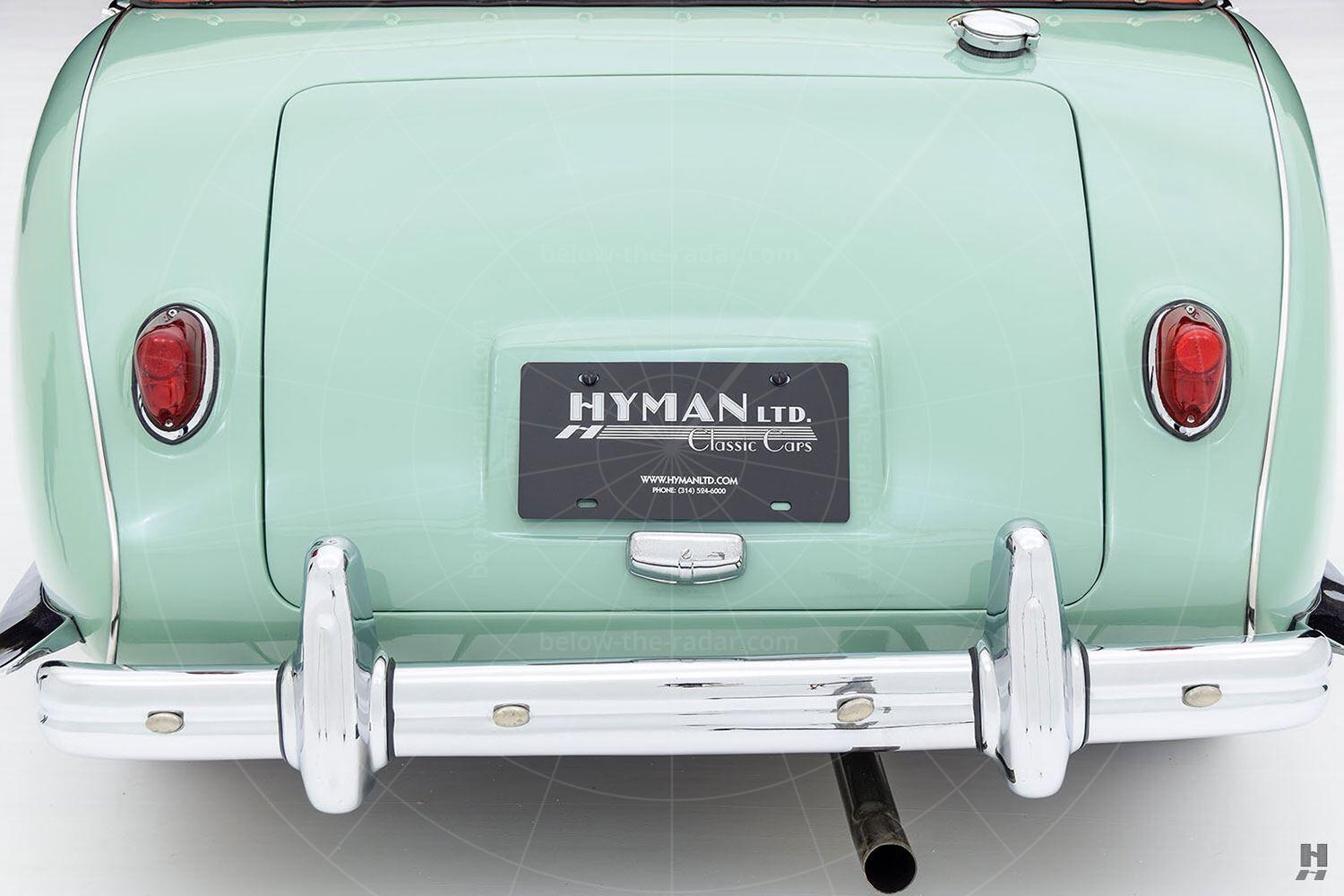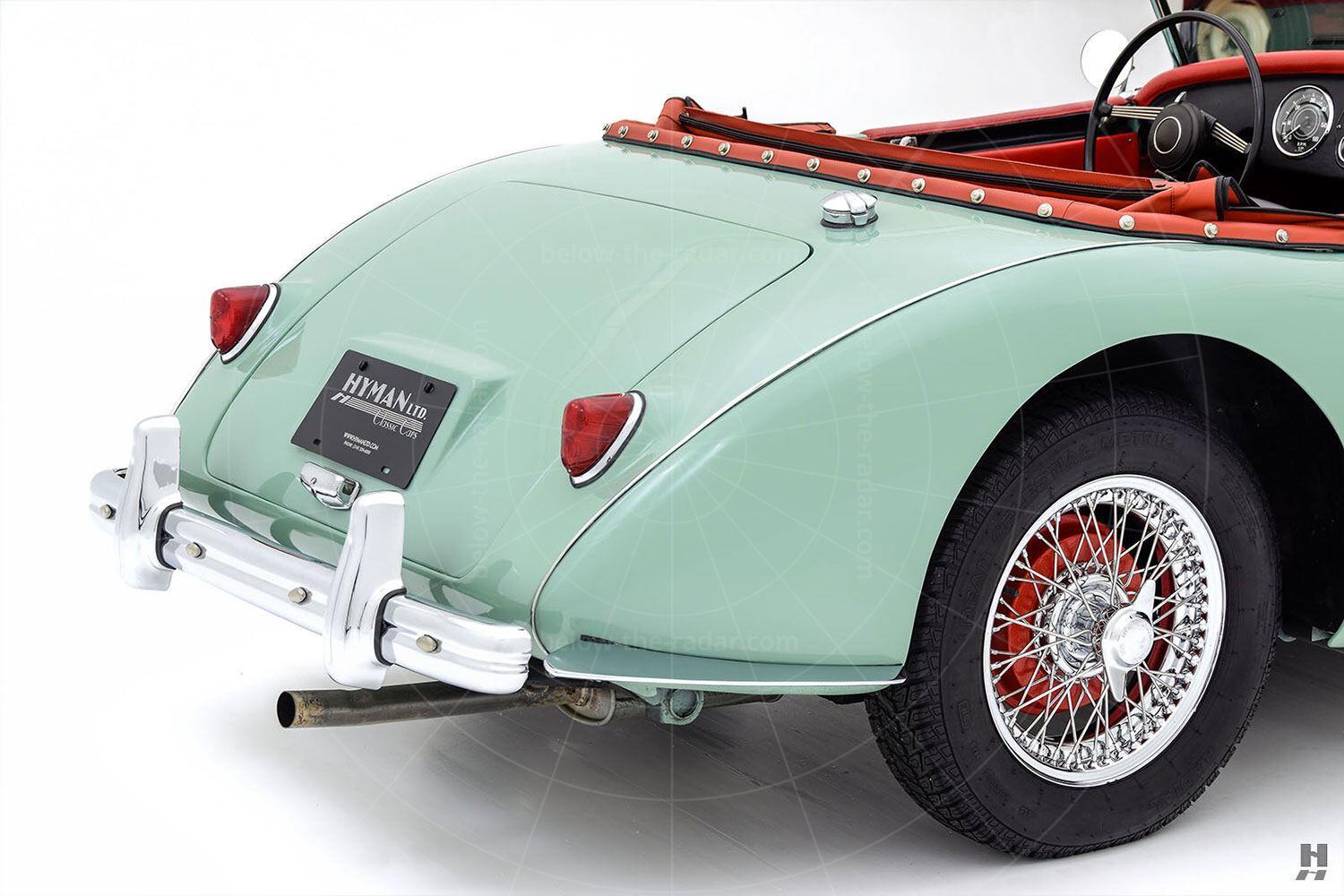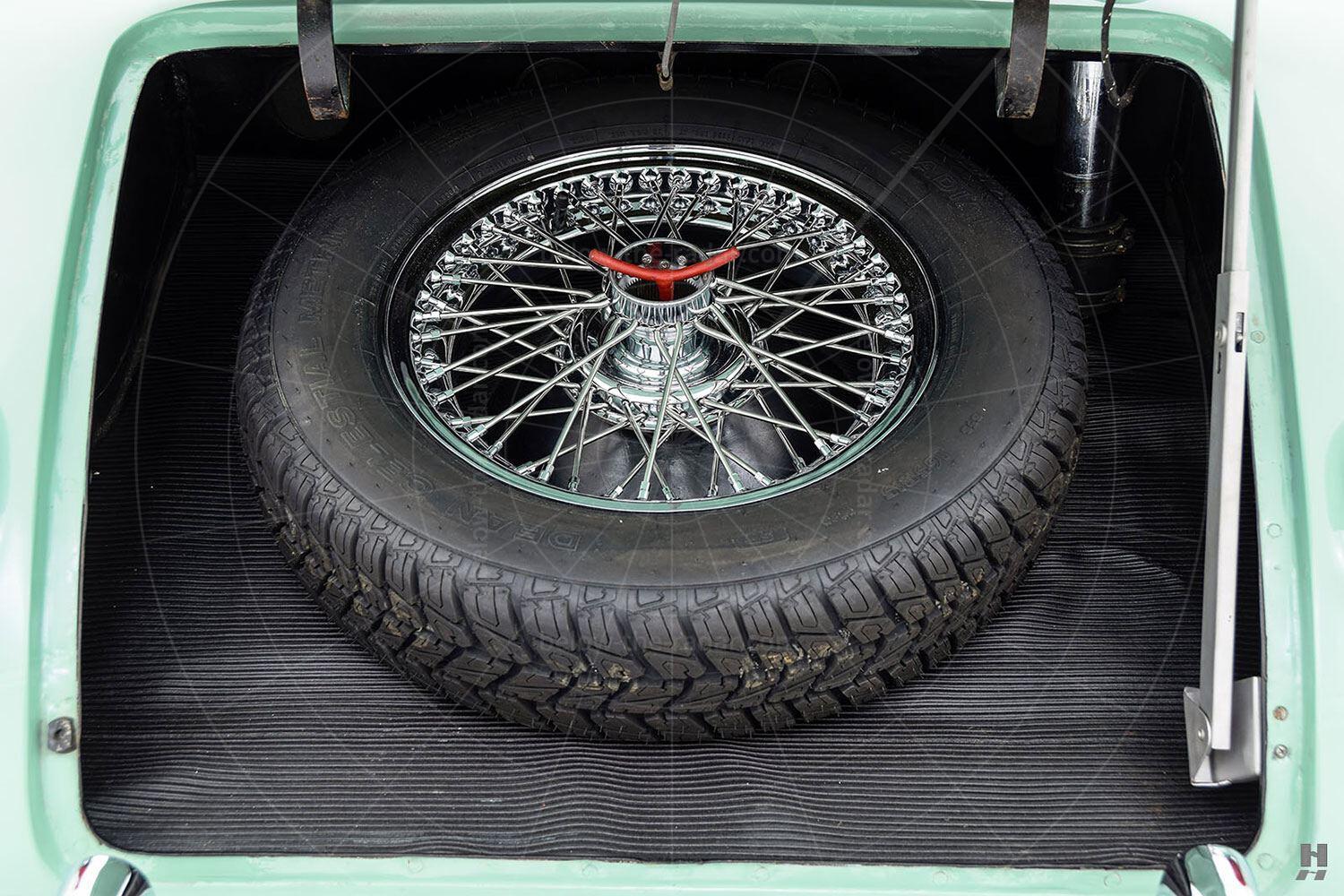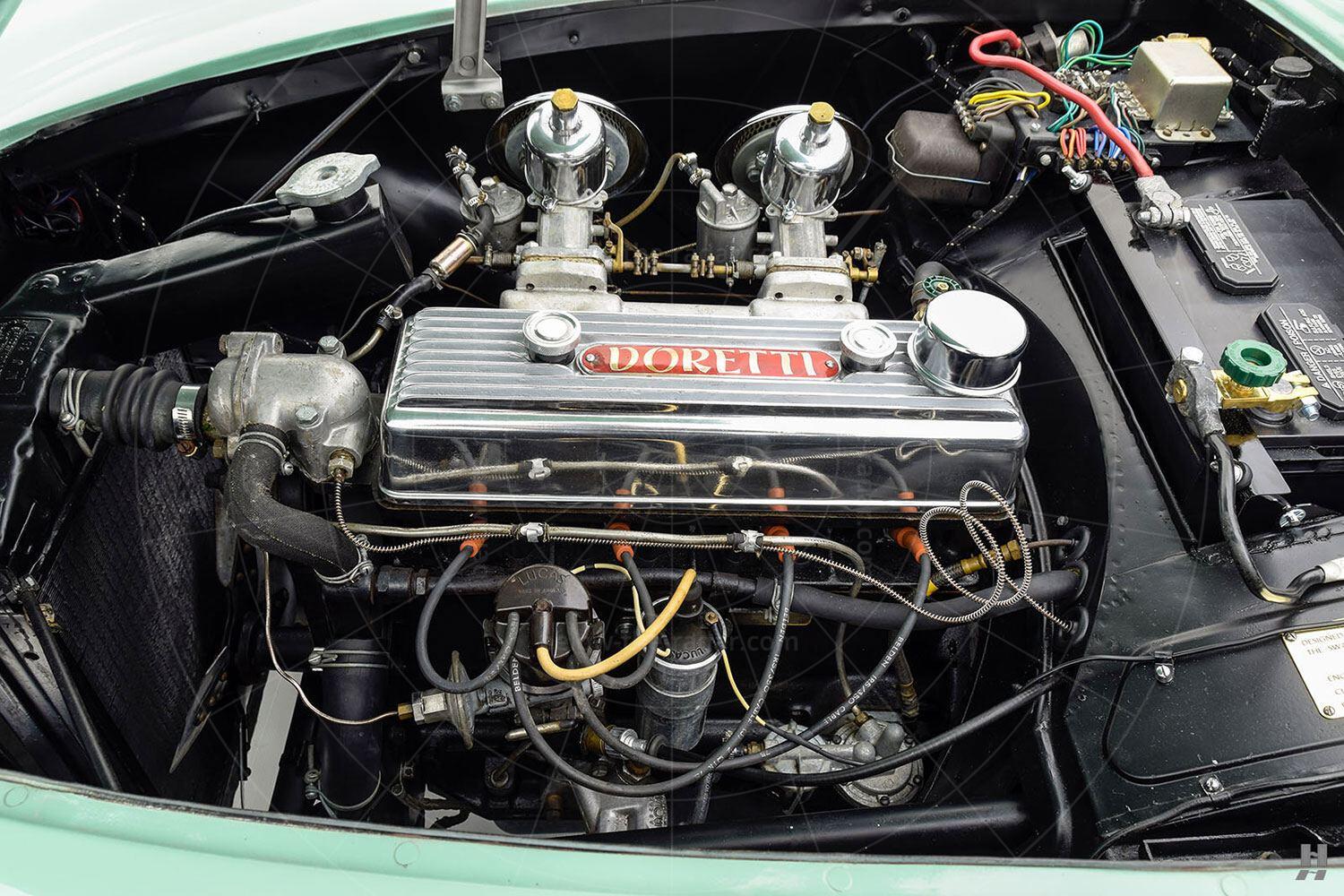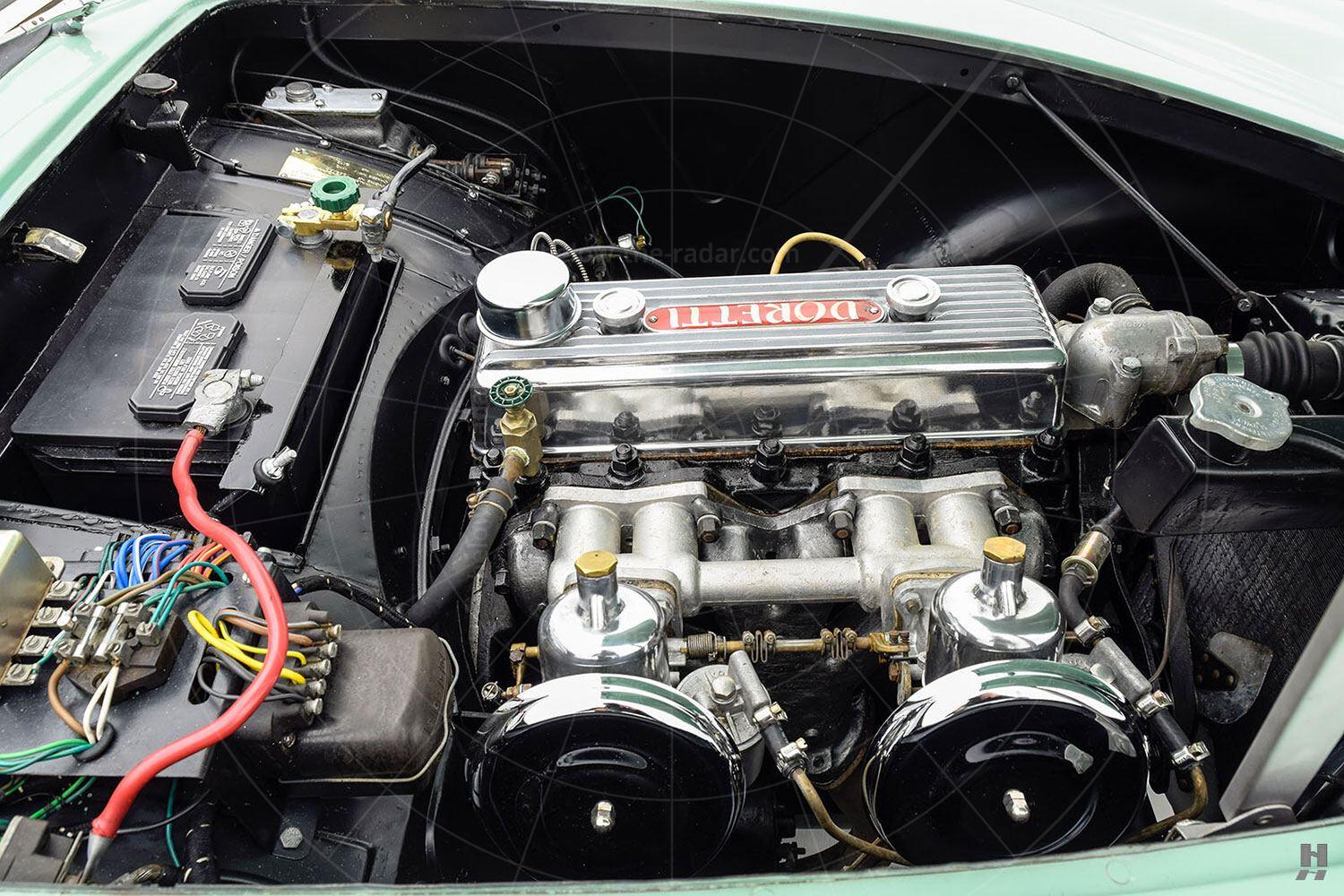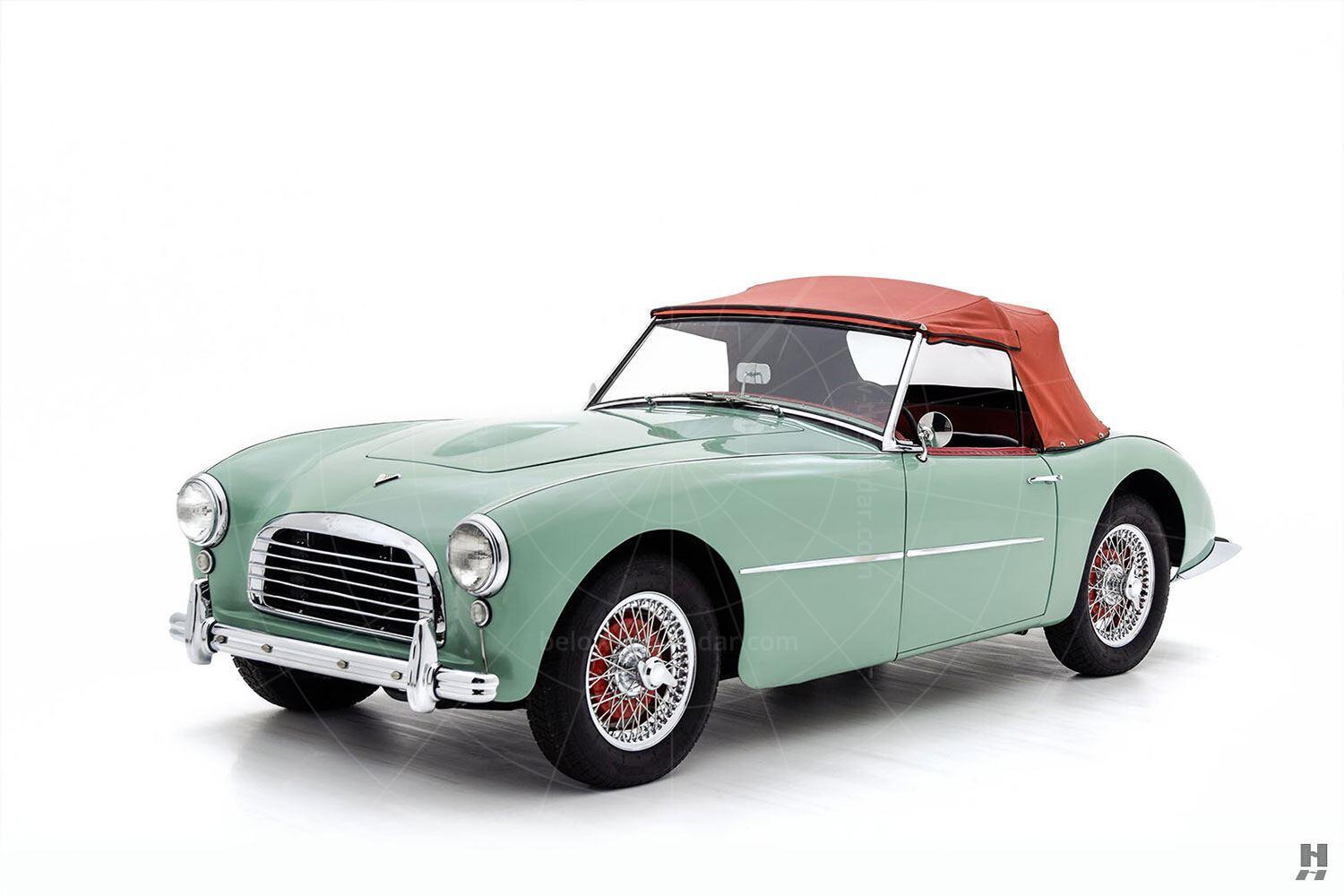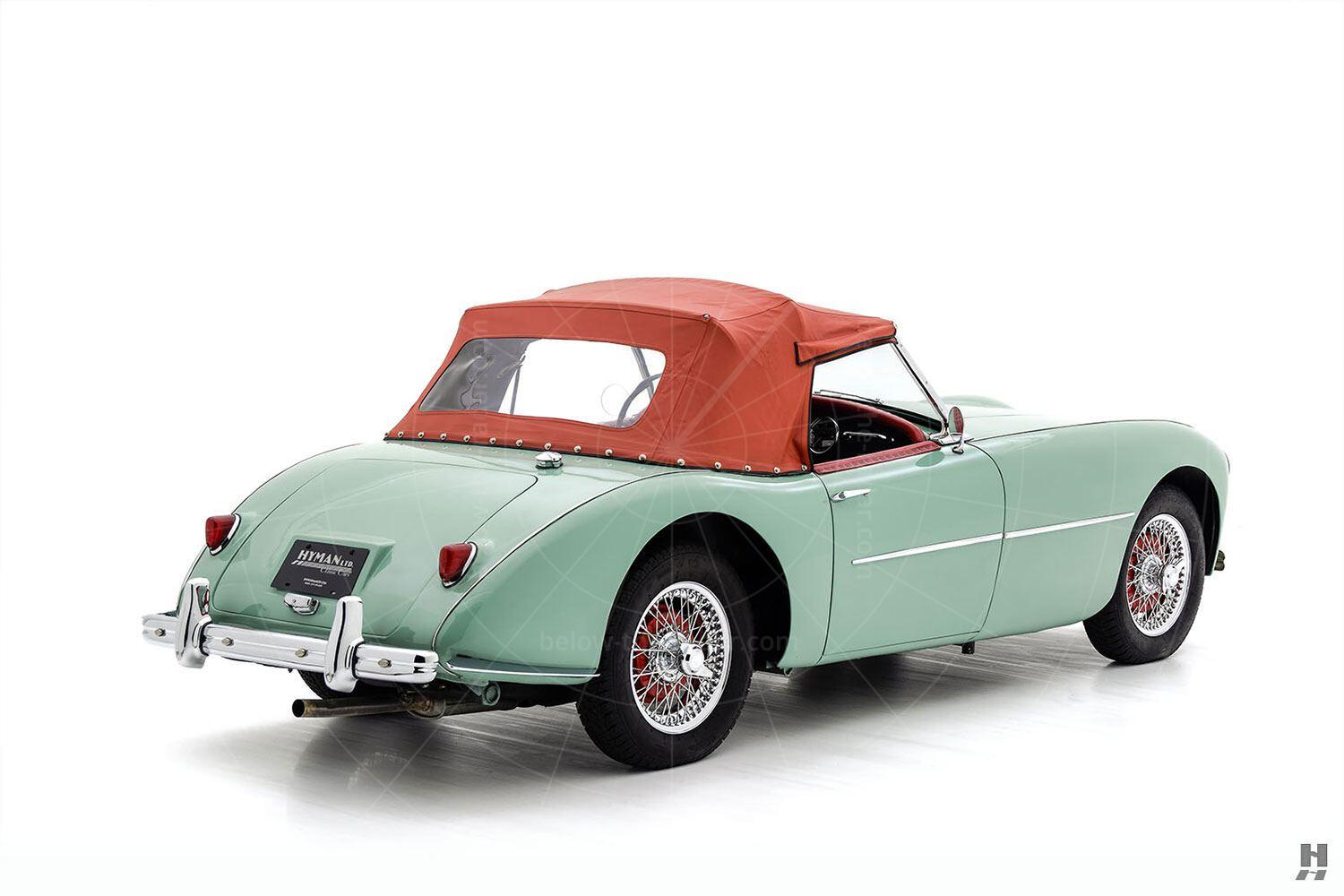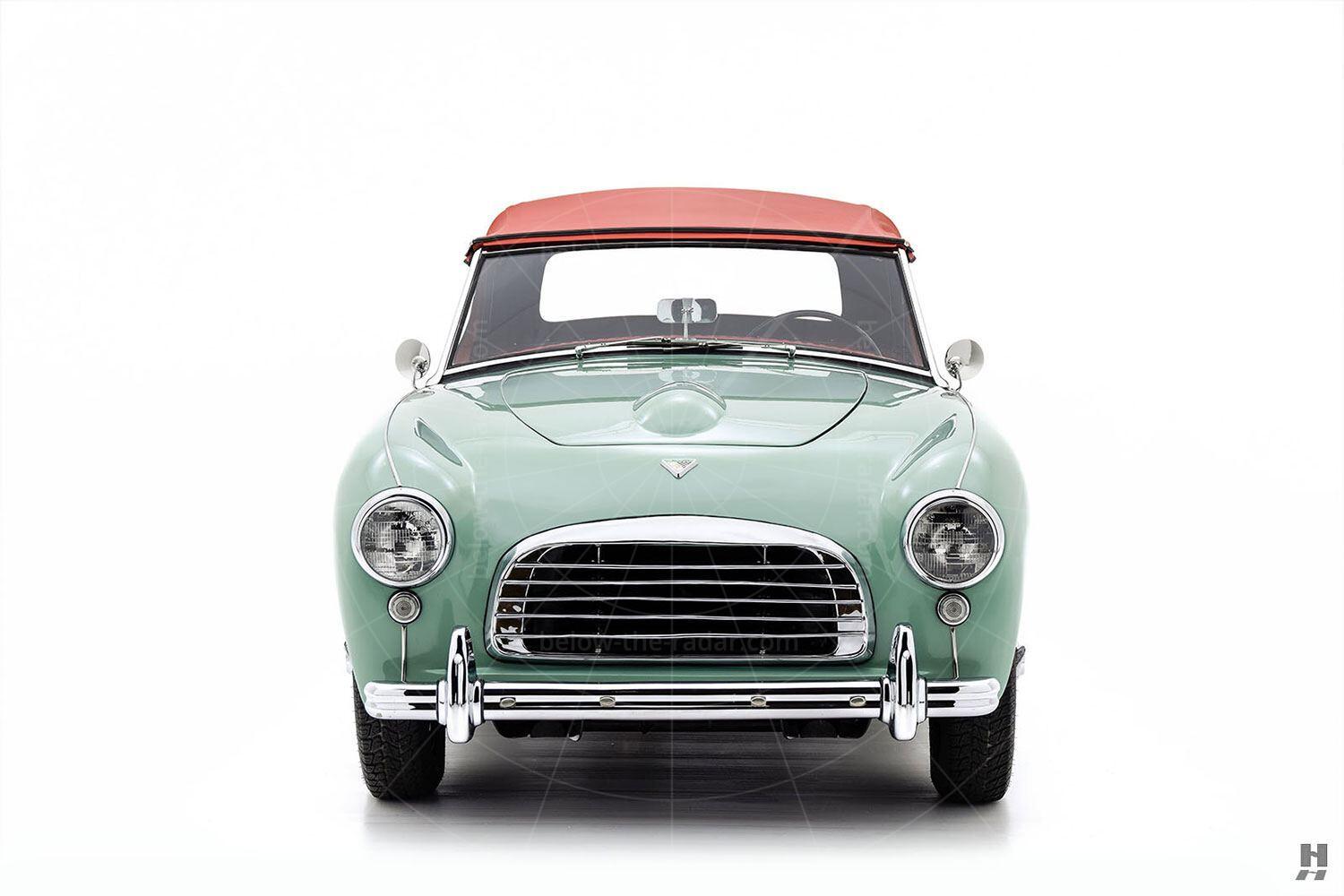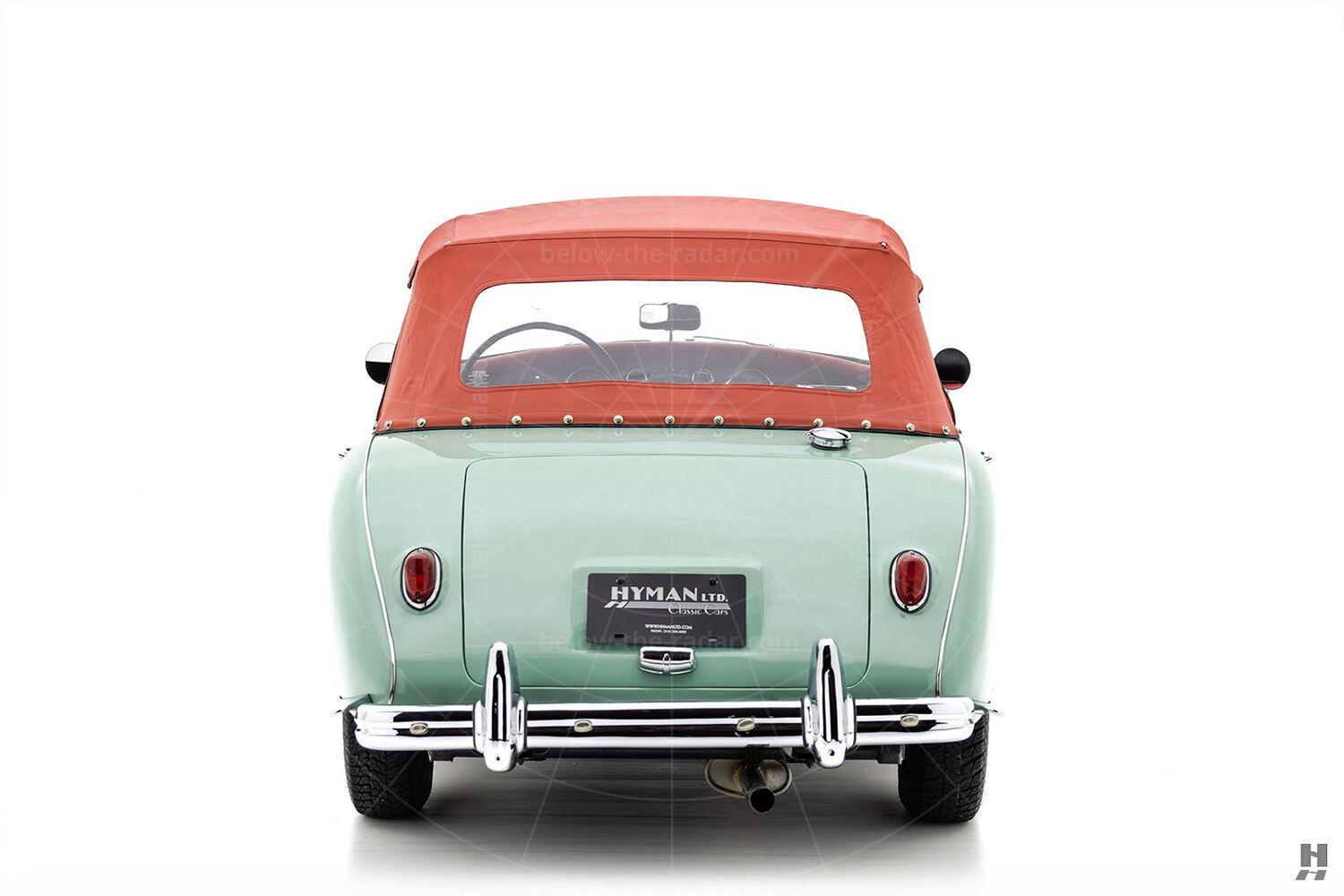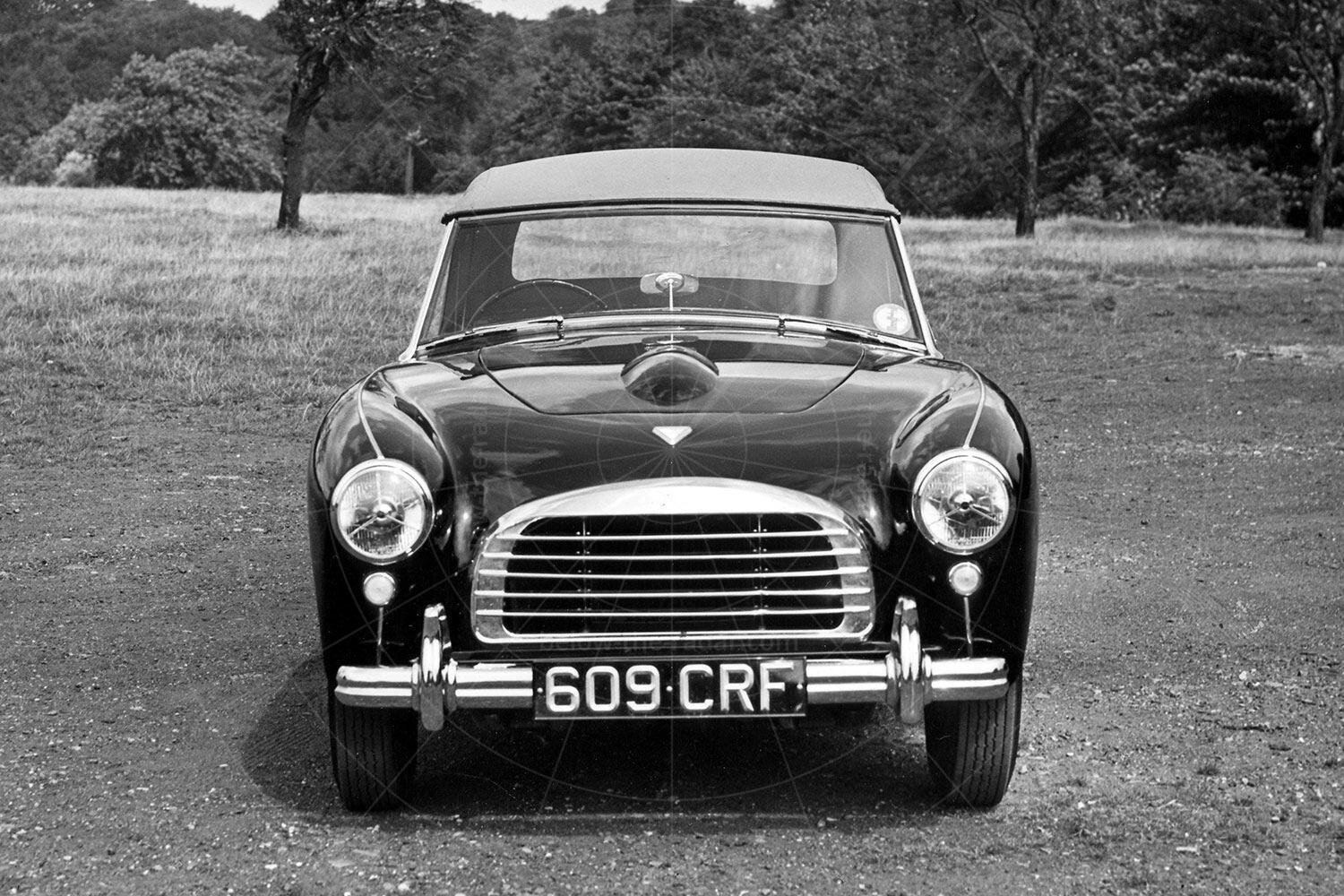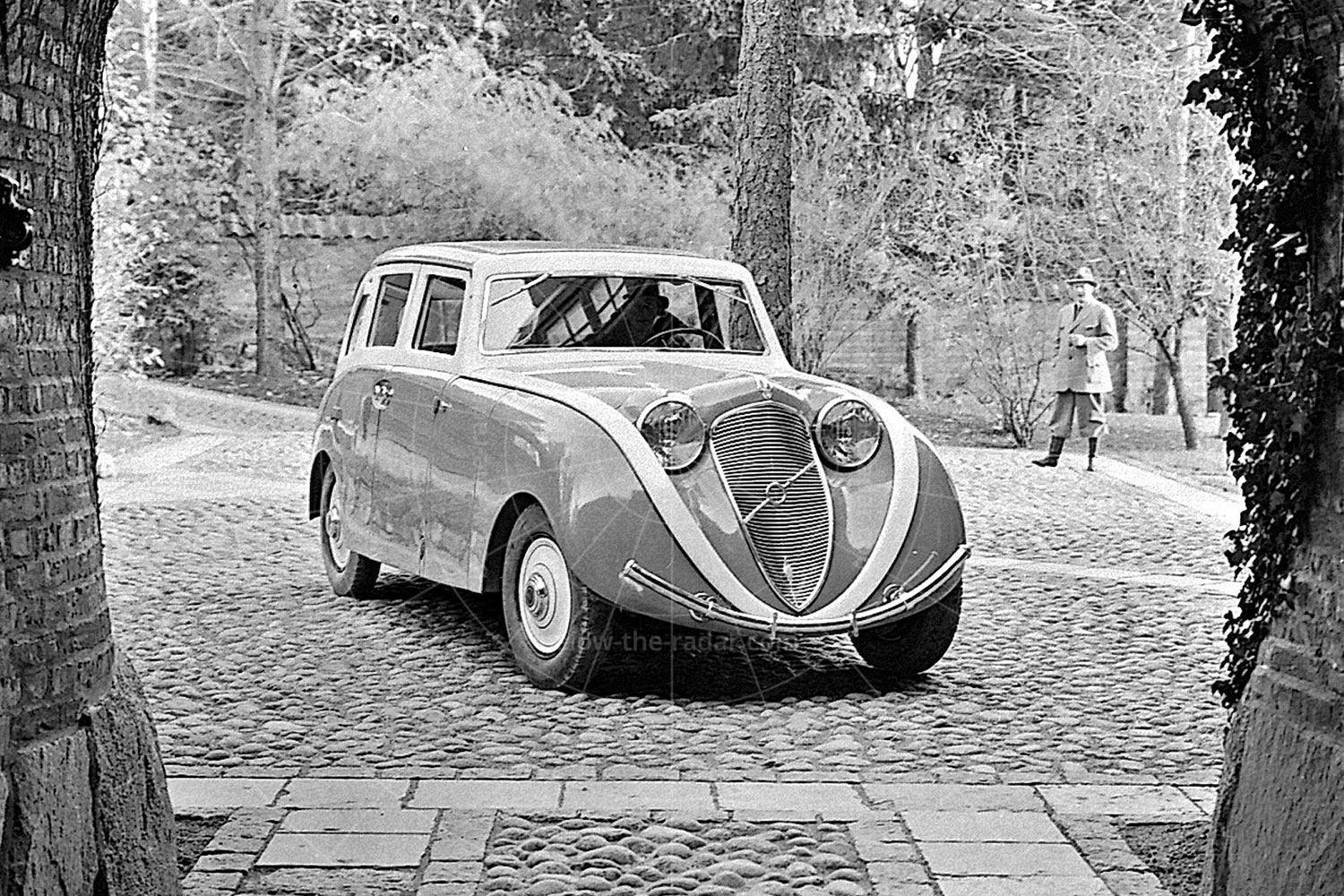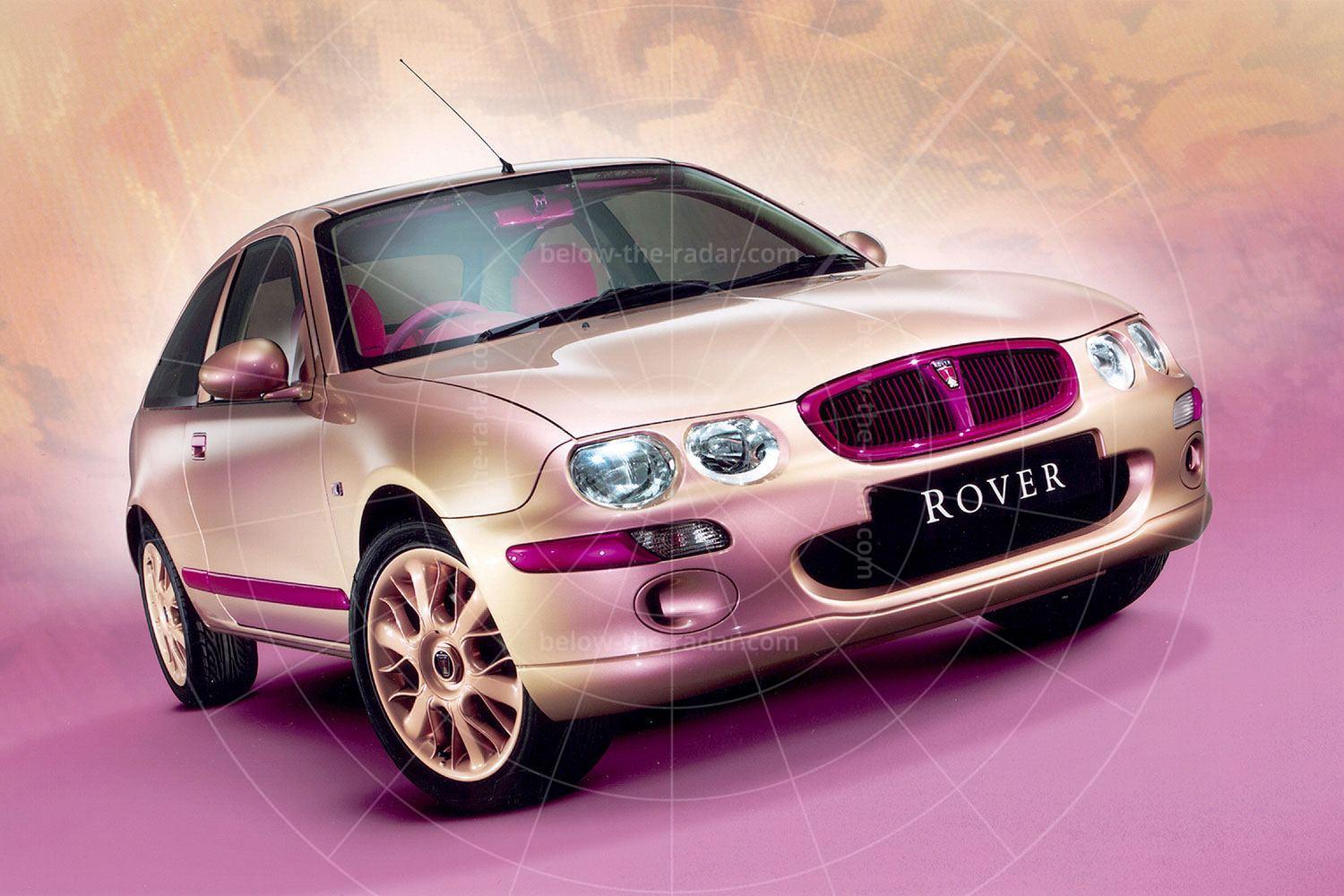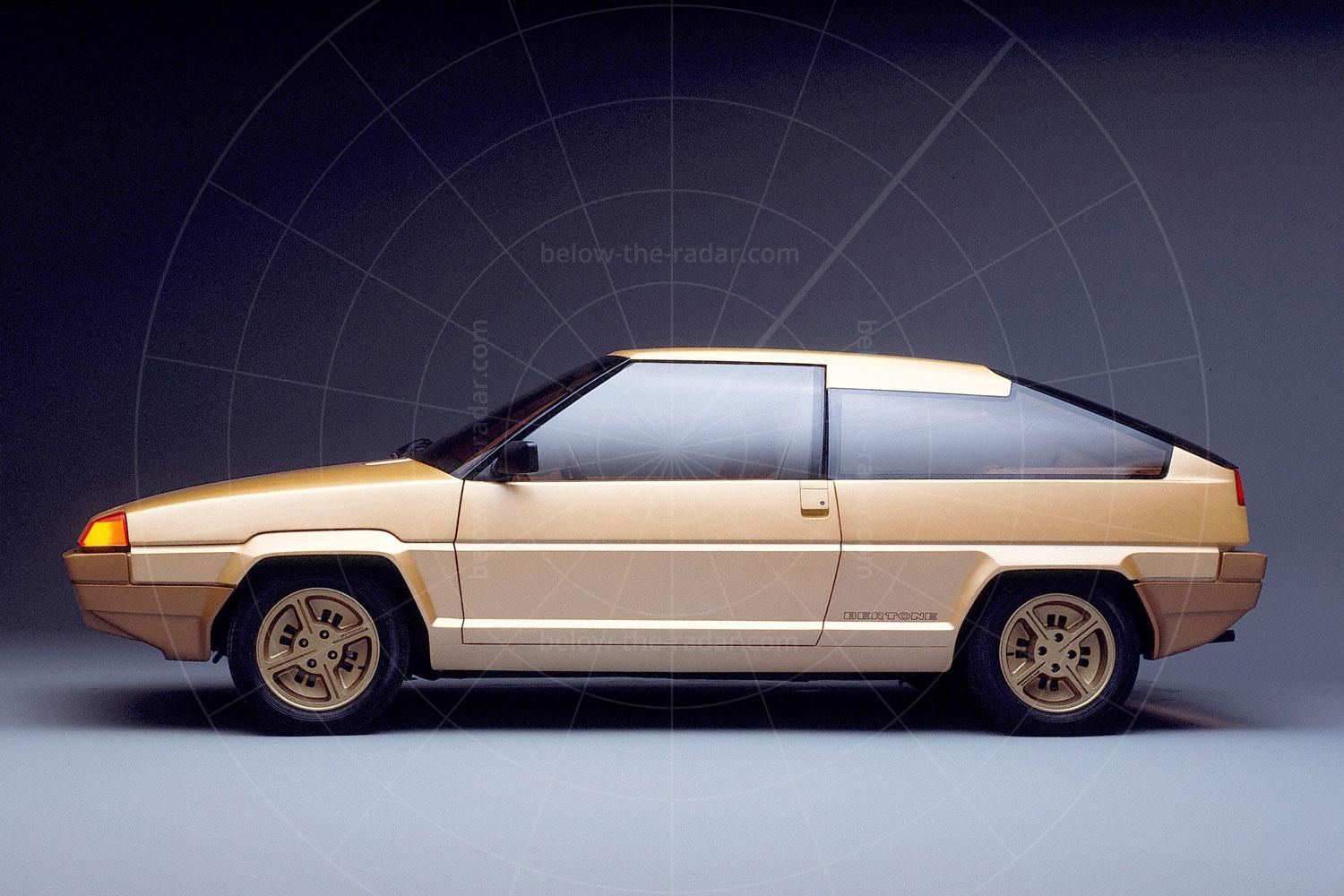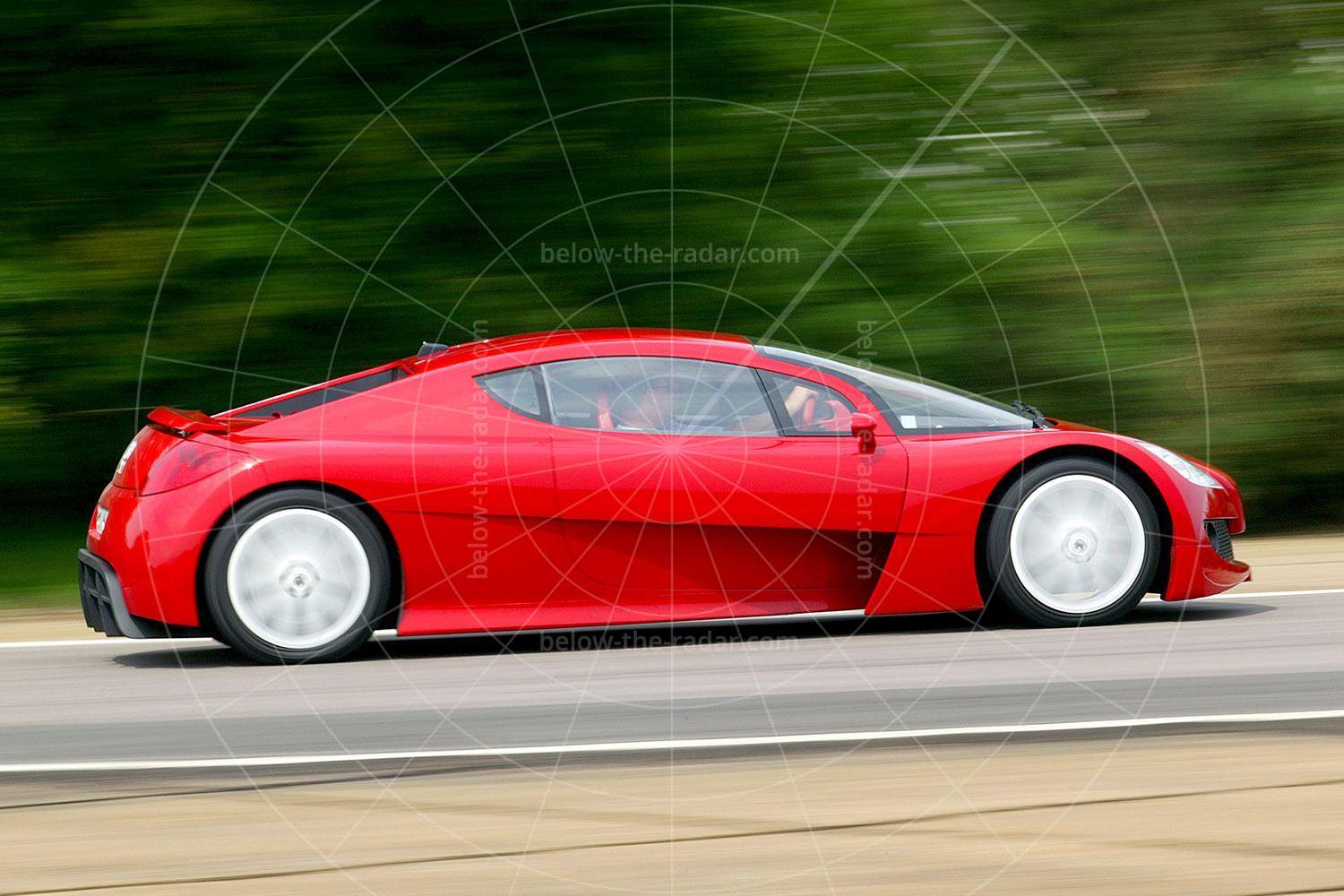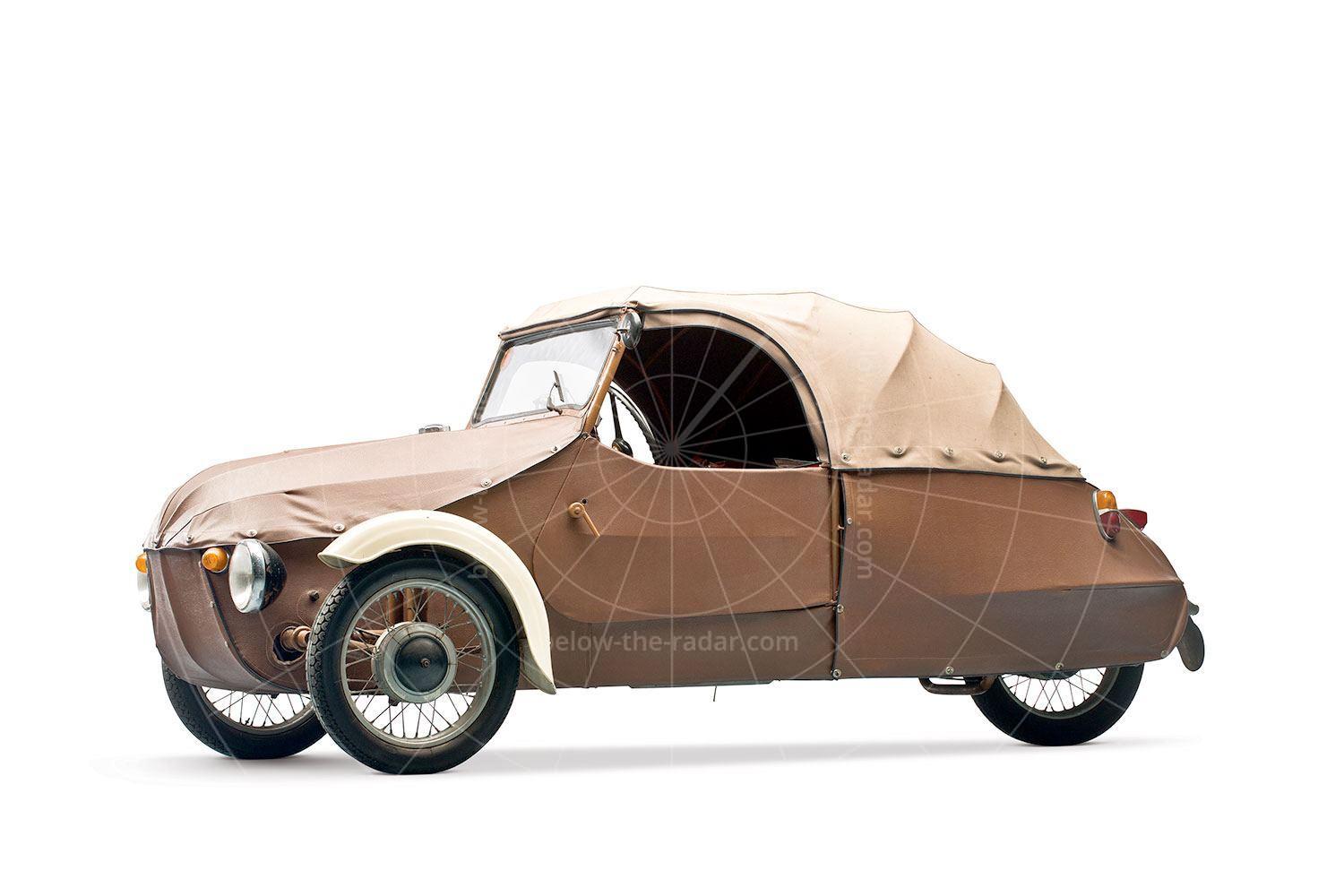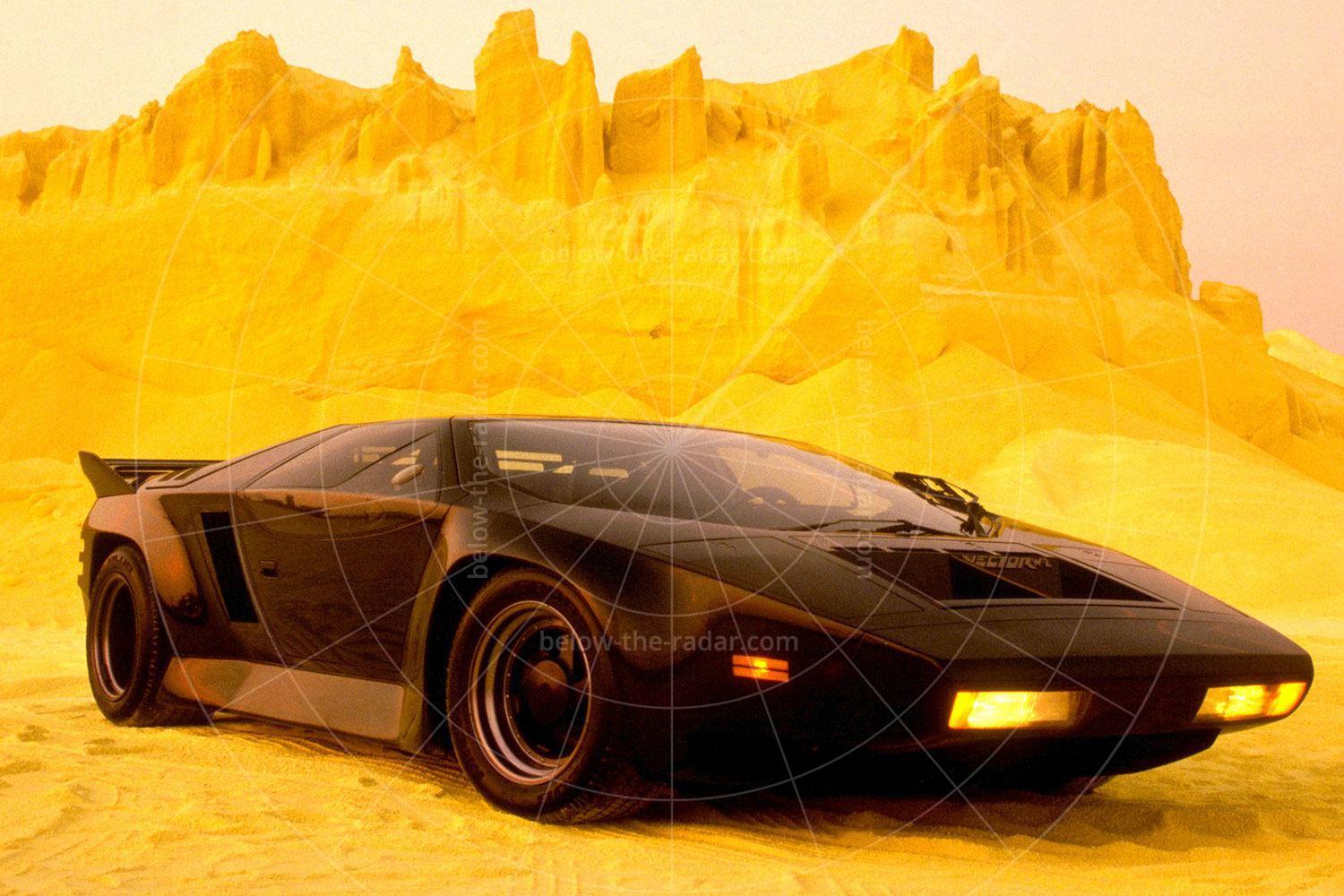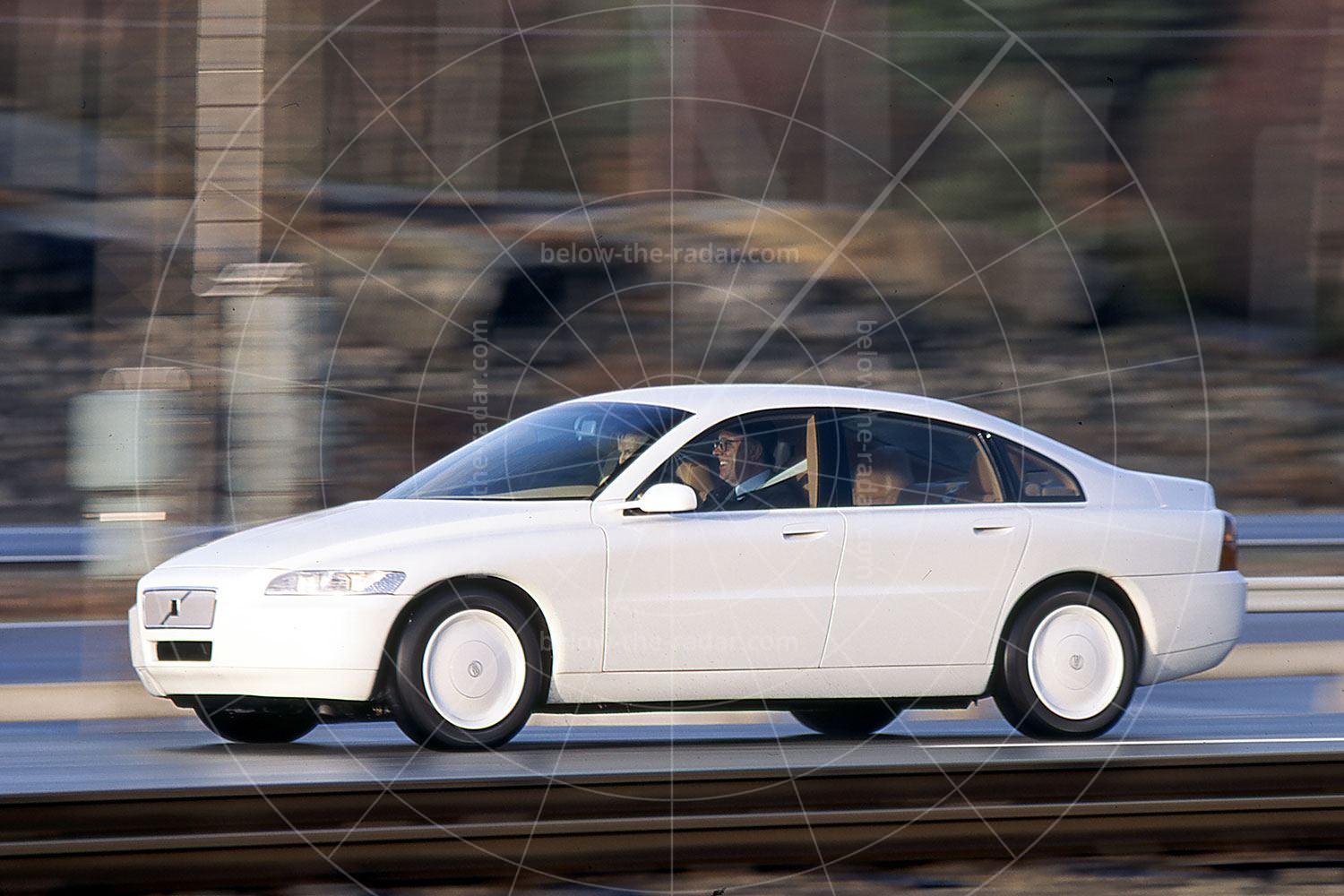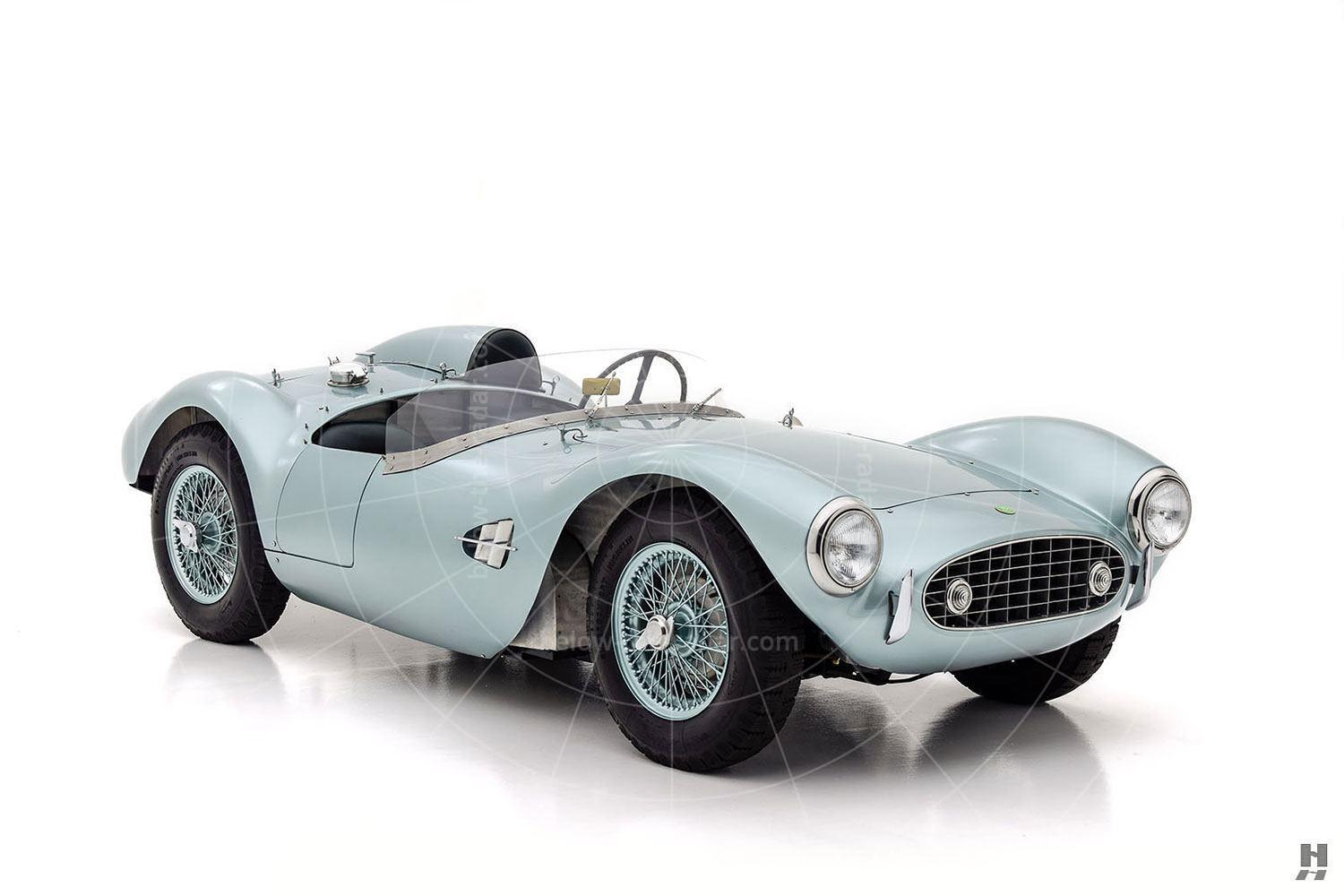Abingdon-based Tube Investments was founded in 1919 with the merger of several seamless steel tubing makers. The company would grow to include a number of important industrial suppliers and manufacturers across England, including Reynolds and Armstrong. By the 1960s the portfolio included Raleigh, BSA, Triumph Cycles and Rudge. Swallow Coachbuilding was added in 1946 when William Lyons, founder of Swallow, sold the sidecar and coachbuilding business to Tube Investments to form Jaguar Cars.
Without Lyons’ leadership Swallow sidecar sales languished, and by the early 1950s, bosses at Tube Investments felt that a sports car could inject some excitement into the Swallow brand, as the storied coachbuilder was still held in very high regard.
In January 1953 Tube Investments commissioned ex-Bristol Aircraft engineer Frank Rainbow to design a two-seater sports car, even though he had never before designed a car of any kind. Rainbow had joined Tube Investments as a trouble-shooter, with a brief of liaising between the 50 or so companies within the conglomerate. Two of those companies were Helliwells and the Swallow Coachbuilding Company, both of which were run by Eric Sanders. In 1946 Helliwells had put into production a scooter called the Gadabout, which Rainbow had designed; by the time the last one was made in 1951, a healthy 2000 examples had been sold.
Sanders went to California in 1952 for a meeting with Arthur Andersen of the Rome Cable Corporation, where the conversation turned to Andersen's desire to produce a sports car specifically for the US market; Sanders told him about the project that Rainbow was working on back in the UK, and the die was cast.
Rainbow was given a clean sheet for the design, while the engine, gearbox, rear axle, and front suspension would come from the Triumph TR2, which had been launched in July 1952. Tube Investments set out to produce a running prototype in just nine months and amazingly, Rainbow and his small team (which included established automotive designer Norman Hodgetts) came up with the goods.
Based on a Chromoly tubular steel ladder chassis built from Reynolds tubing, the new sports car was longer and wider than a TR2, which allowed the engine to be mounted further back for better weight distribution. Ironically, the pretty Frank Rainbow-penned body was built by Panelcraft, as Swallow could not meet the production requirements. California importer Arthur Anderson suggested the name Doretti after his daughter Dorothy Deen, who ran a successful business selling sports car accessories under the Doretti name.
Compared with the TR2 the Doretti weighed 56lb (25kg) more, despite its body panels being made from aluminium; the result was slightly slower acceleration, with 0-80mph taking an extra 1 ½ seconds. The reason for the extra weight was that the Doretti was significantly bigger than the TR2; it was 5 ½ inches wider, with all of this space being used to provide a roomier interior. It was also five inches longer, but despite this the Doretti's boot was smaller and there was less leg room for the car's two occupants. Most of the extra length was used up by more front overhang as well as more carrying capacity behind the two seats.
Where the Triumph really scored over the Swallow was with its ergonomics. Whereas the TR's instrumentation was grouped together neatly in front of the driver, for some reason the Swallow's gauges were all over the place, with the rev counter in front of the passenger. Bizarrely, while the Doretti came with a Triumph steering wheel, it was fitted upside down!
The Swallow Doretti was priced at £1101, plus an extra £40 for overdrive; other options included wire wheels at £25 and a radio was another £42. That was quite pricey compared with a Triumph TR2 which was a mere £844, while an Austin Healey 100 was £1063. Or there was the Allard Palm Beach, which was also priced at £1063 with Ford Zephyr six-cylinder power; for £42 less it was possible to specify a four-cylinder Consul engine instead. Despite costing significantly more than a TR2, Swallow Doretti sales got off to a brisk start, largely on the back of rave reviews. The Autocar tested 610 CRF and reported:
The Doretti will cruise very comfortably at around 80mph on the speedometer, equal to a genuine 74mph, leaving plenty of power at low revs and is very flexible, and under test conditions it was found that it would accelerate smoothly in top gear from a speed as low as 11mph. This bottom-end flexibility is particularly useful in dense traffic.
At the front the suspension system consists of a conventional arrangement of coil springs and wishbones, but at the rear torque rods are added to the open propellor shaft drive to ensure that the rear leaf springs do not simulate a letter S under violent braking or accelerating. The suspension is inclined to be hard by modern standards, and this is particularly noticeable when the car is driven over rough surfaces.
On normal roads the ride is very satisfactory and the roadholding good, and there is very little roll on corners. With an unladen weight distribution giving 52% on the front wheels there is a very slight degree of understeer. The car displays good manners generally and holds its line well on corners. The steering is light and accurate, although a slightly smaller turning circle would be appreciated. With 2 ¼ turns from lock to lock, control is precise, yet no shocks are transmitted back to the driver's hands; conversely the steering does not feel in any way dead, and variations in road surface can be detected through it.
The Swallow Doretti is a neat and compact two-seater sports car which has a very lively performance together with a very satisfactory fuel consumption. It is a trim little car with pleasing lines, and the general finish indicates that it is a well-made, workmanlike job. It is moderately priced and should meet the needs of those requiring a medium-sized sports car that will stand a lot of hard work and be fun to drive.
When The Motor put a Swallow Doretti through its paces (609 CRF) it was equally enthusiastic about the car's prospects:
As a fully equipped sports car which offers comfort, 100mph performance, low running costs and delightful road manners, the Doretti is an attractive newcomer to British and other markets. The enterprising spirit which has translated an idea into praiseworthy reality is backed by quite substantial resources, and we are confident that no opportunity of improving this model further will be missed by the Swallow Coachbuilding Co.
When the Doretti prototype had been shipped to the US in late 1953 it had gone down a storm there, with Arthur Andersen cranking up the publicity machine to the max. Rainbow accompanied the car on its tour and when he returned to the UK he brought with him a list of improvements that had been suggested, such as a bigger boot and wind-up windows. At that stage such improvements could have been made, but the Tube Investments board wanted to get the car into production as quickly as possible.
As a result Rainbow worked on a Doretti Mk2 (known as the Sabre), which incorporated various improvements such as a stiffer chassis, a bigger boot, a 2+2 configuration and an exterior refresh too. But the Sabre would never see the light of day because while the Doretti enjoyed swift sales from the start, and plans were put in place for follow-up models, just 276 examples were made before production was stopped in February 1955, after just 10 months. That compares with just 244 TR2s made by Triumph in the same period.
History sometimes paints the Swallow Doretti as a failure given its short production run, but in reality it was a victim of its own success. Sir William Lyons did not appreciate one of his primary suppliers building a sports car that supposedly rivalled his own XK120, although that car was significantly more costly at £1644 in convertible form; even the cheapest Open Two-Seater model was £1601.
Lyons said to Tube Investments that it should decide whether it wished to continue making sports cars because if it continued to produce the Doretti he would be forced to consider a new supplier for Jaguar’s bumpers, door locks, and other parts. The message was received loud and clear, and without a public statement, production of the Swallow Doretti halted abruptly.
Frank Rainbow went to work for Triumph initially as a development engineer, but by 1960 he had taken over his father business, Teesdale Tools. He died in 1990 just one month short of his 80th birthday.
*Many thanks to David Malin who got in touch to say what an important role his father-in-law Norman Hodgetts played in the design of the Swallow Doretti. Norman worked closely with Frank Rainbow, who usually gets all of the credit for the car's design, when in fact the styling work was very much a double act.
| Vital statistics | |
|---|---|
| Produced | 1954-1955, England |
| Number built | 276 |
| Engine | Front-mounted, 1991cc, 4-cylinder |
| Transmission | 4-speed manual, optional overdrive, rear-wheel drive |
| Power | 90bhp at 4800rpm |
| Torque | 117lb ft at 3000rpm |
| Top speed | 100mph |
| 0-60mph | 12.3 seconds |
| Price | £1101.87 |
- The two cars pictured were both sold by Hyman Ltd. Many thanks to Hyman Ltd for the use of its pictures to illustrate this article.

